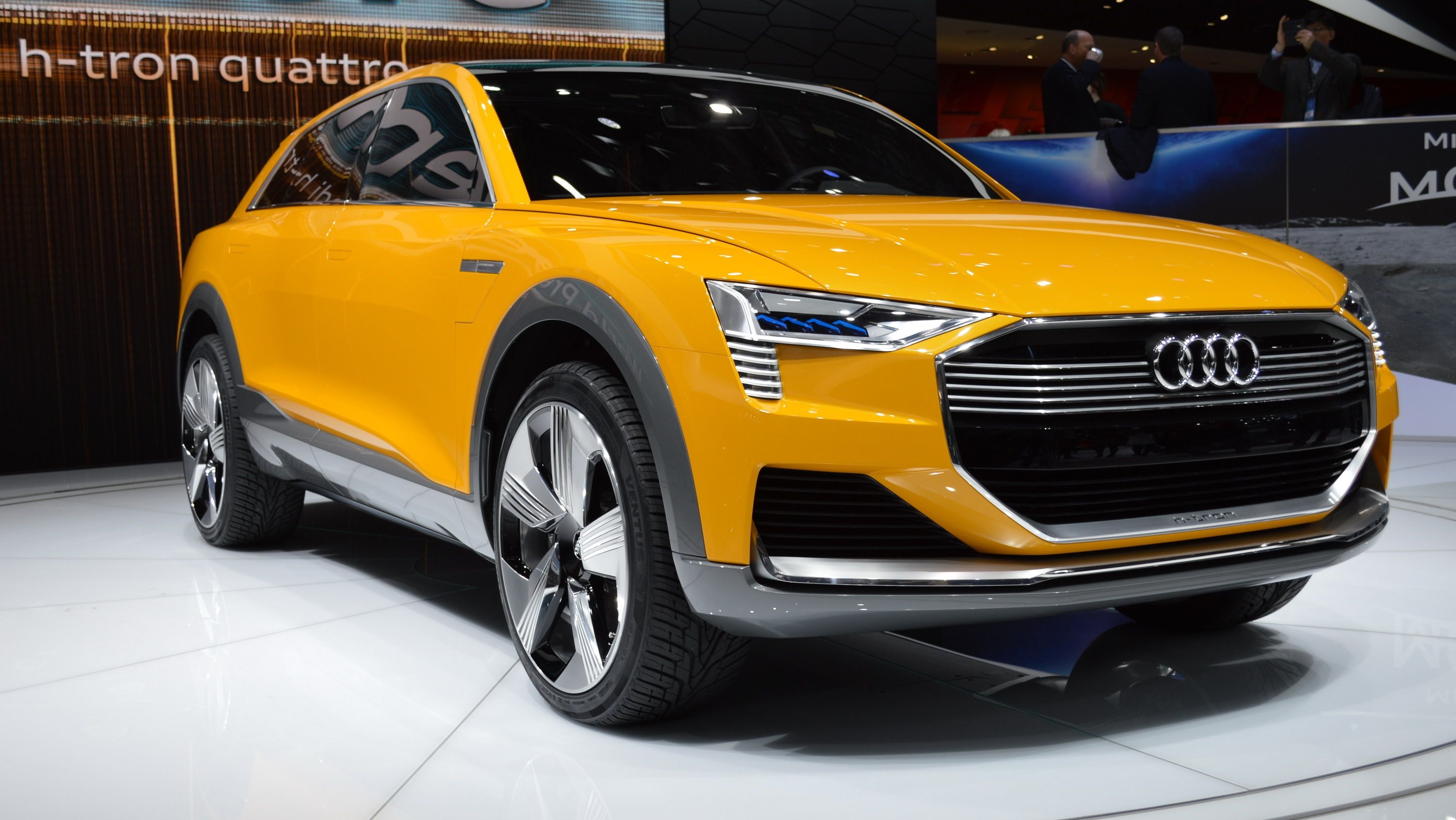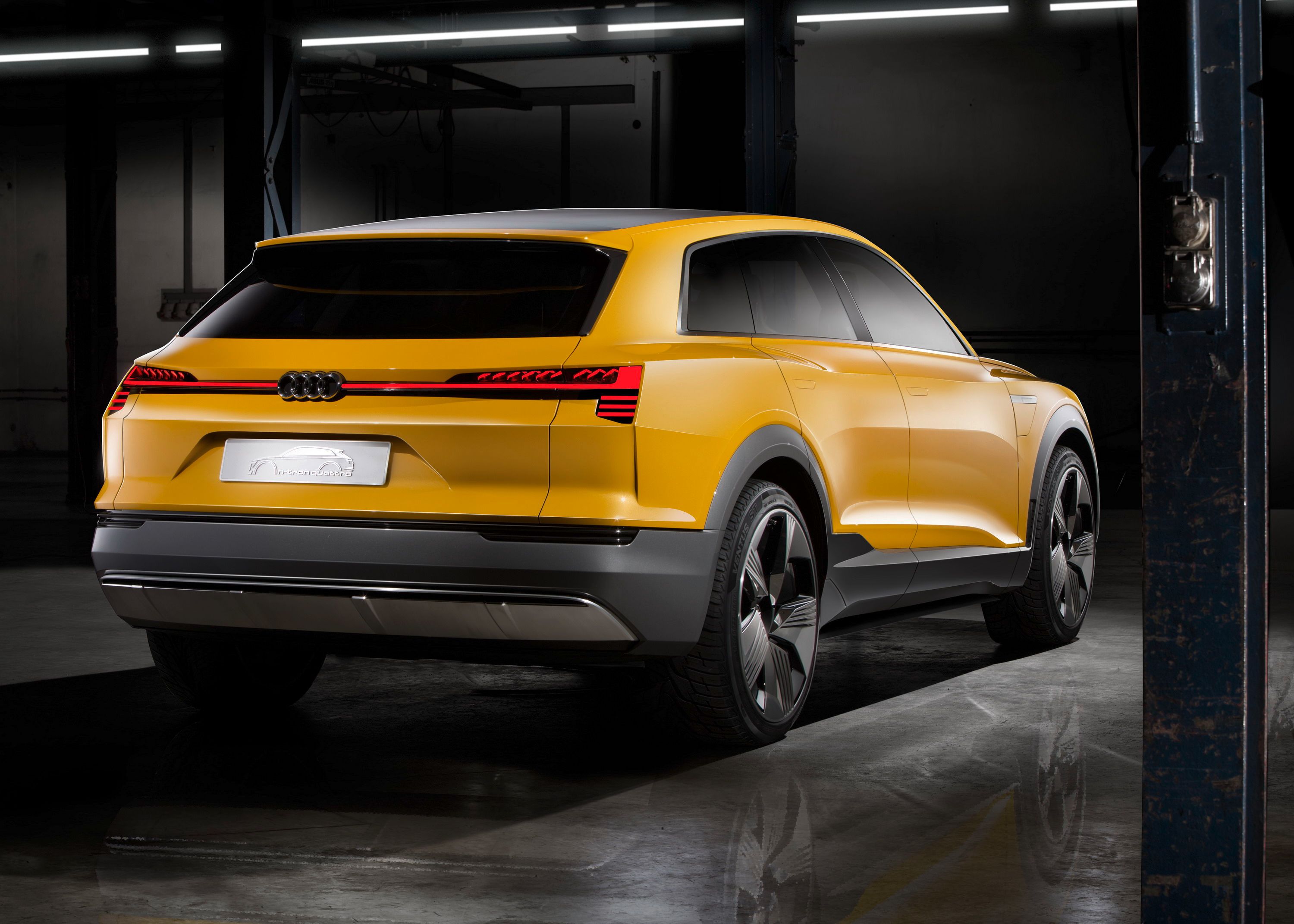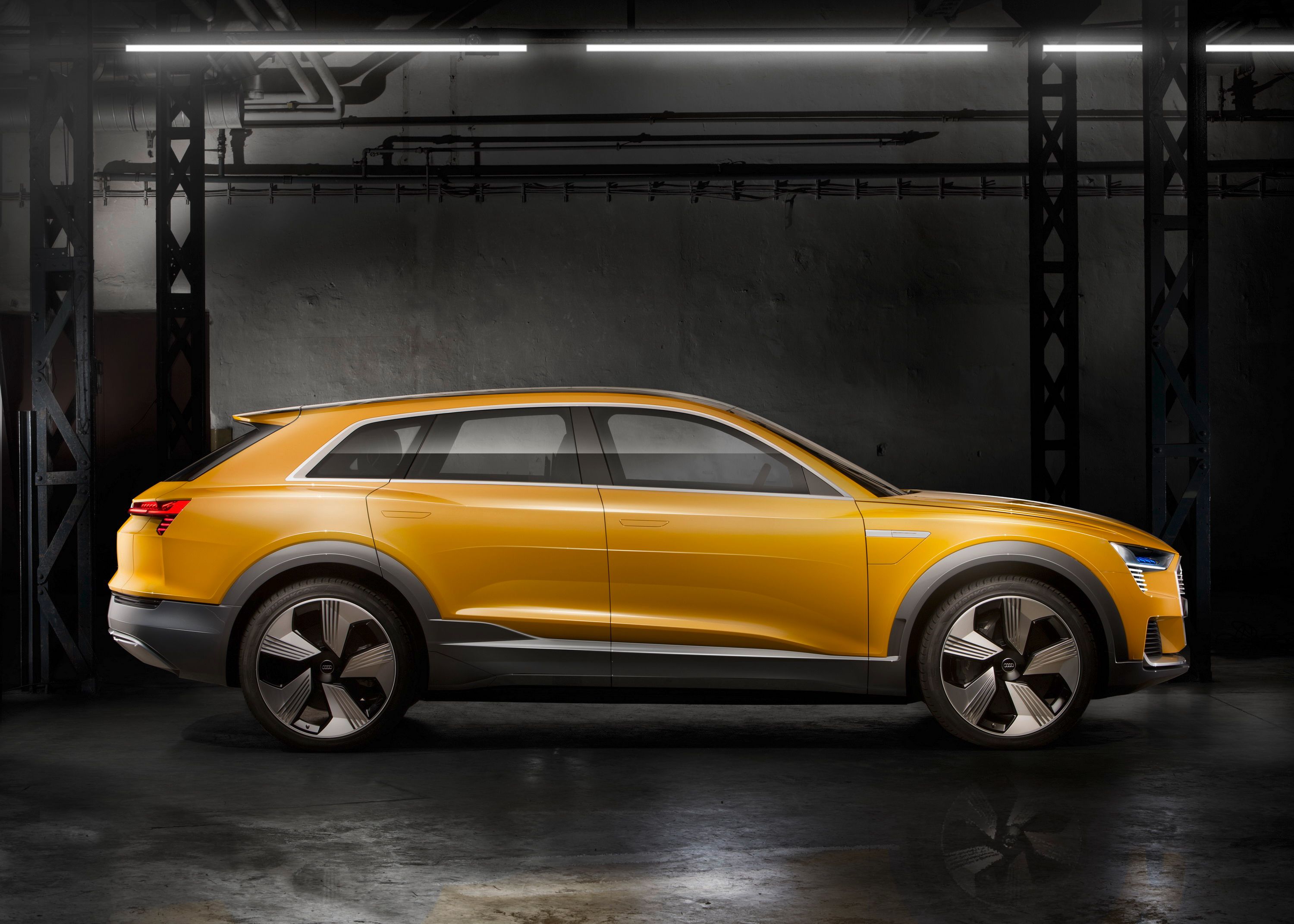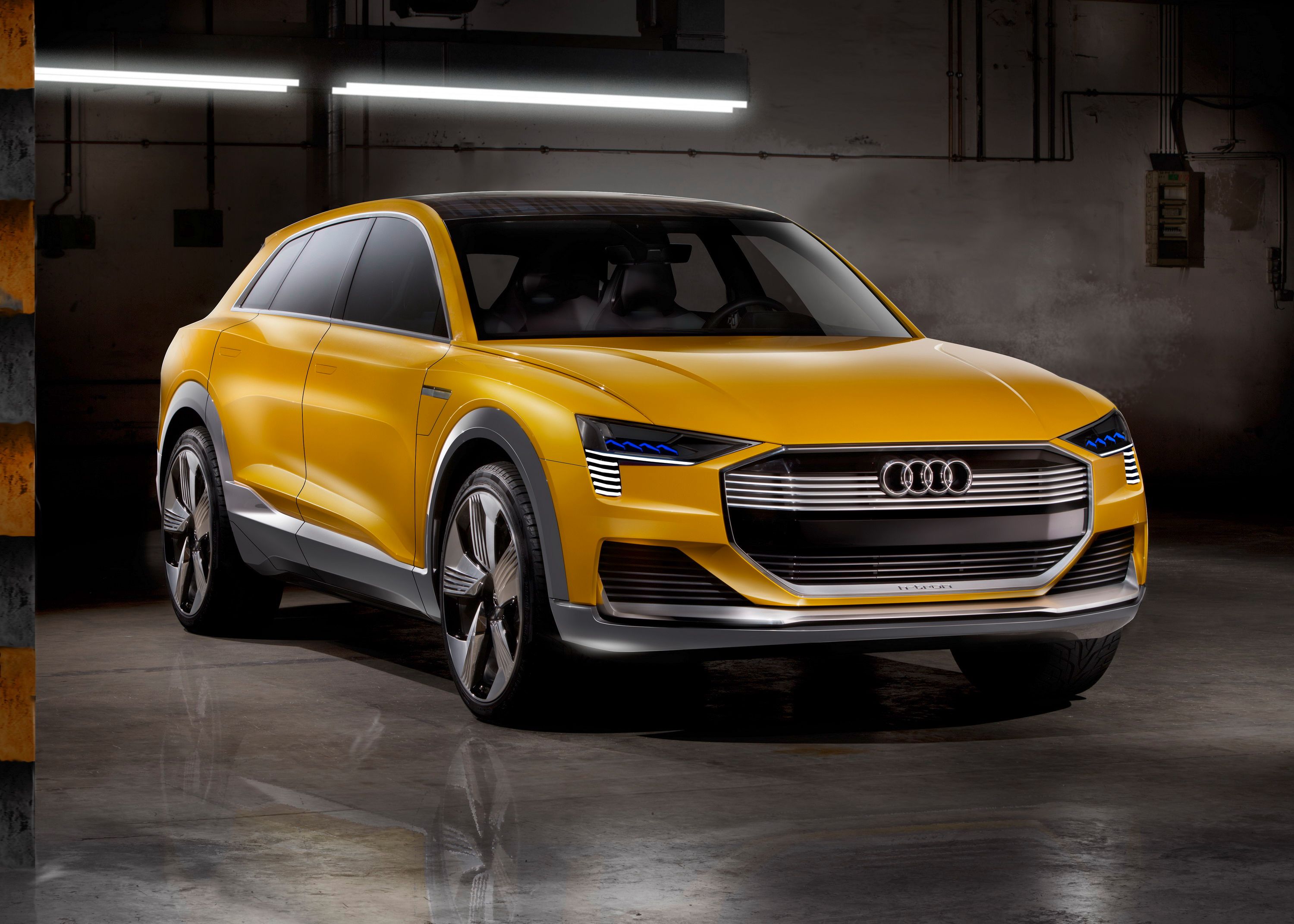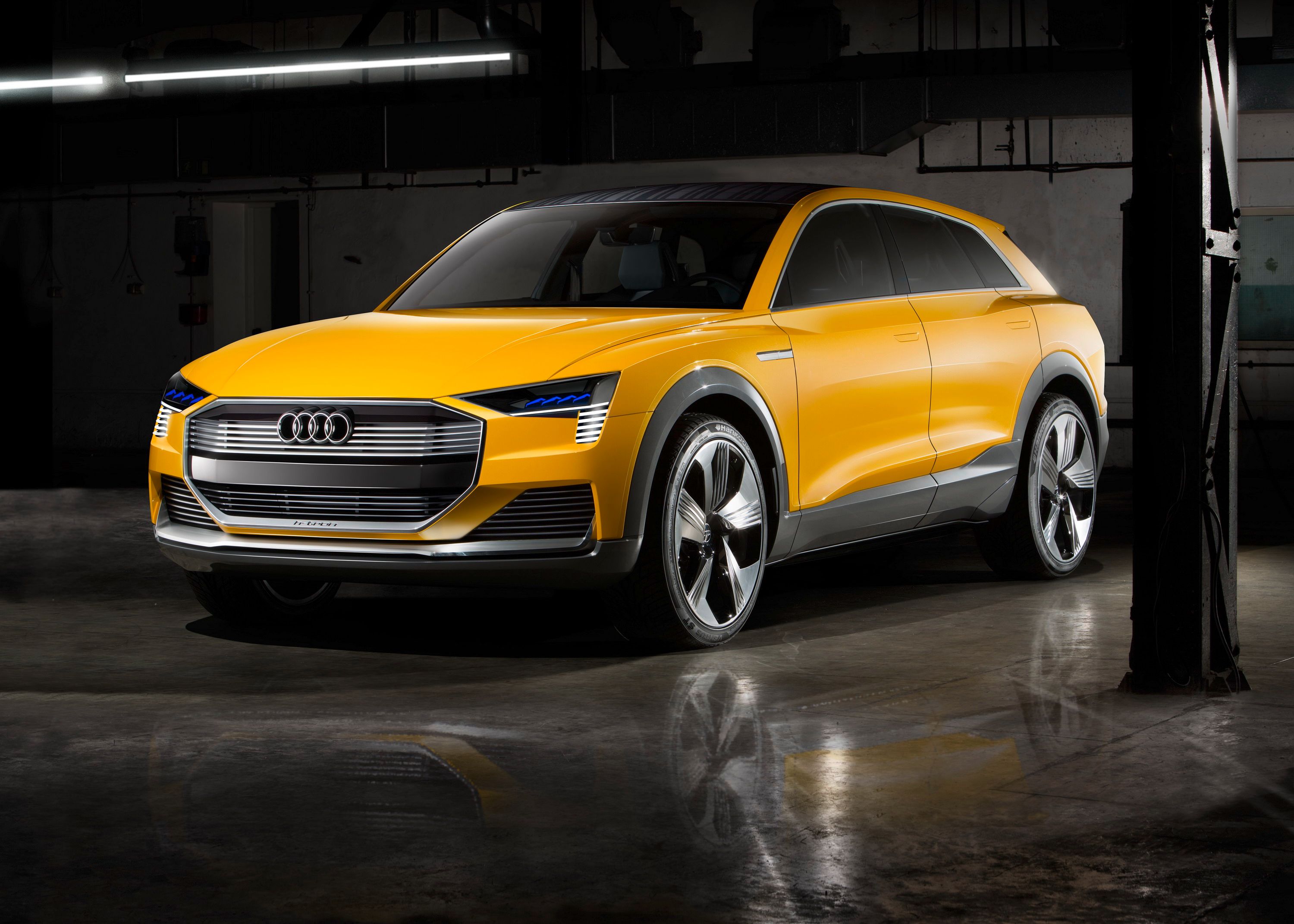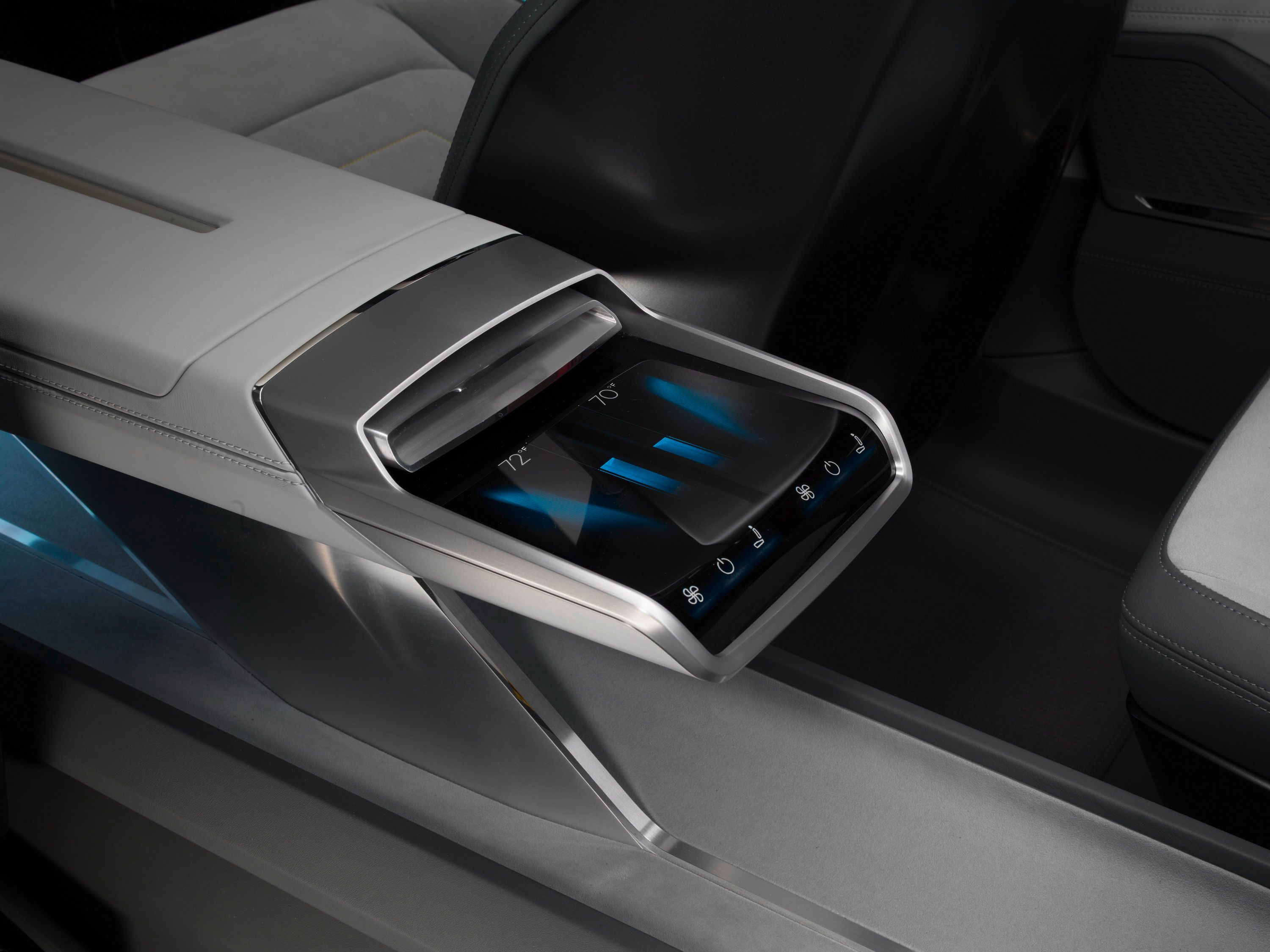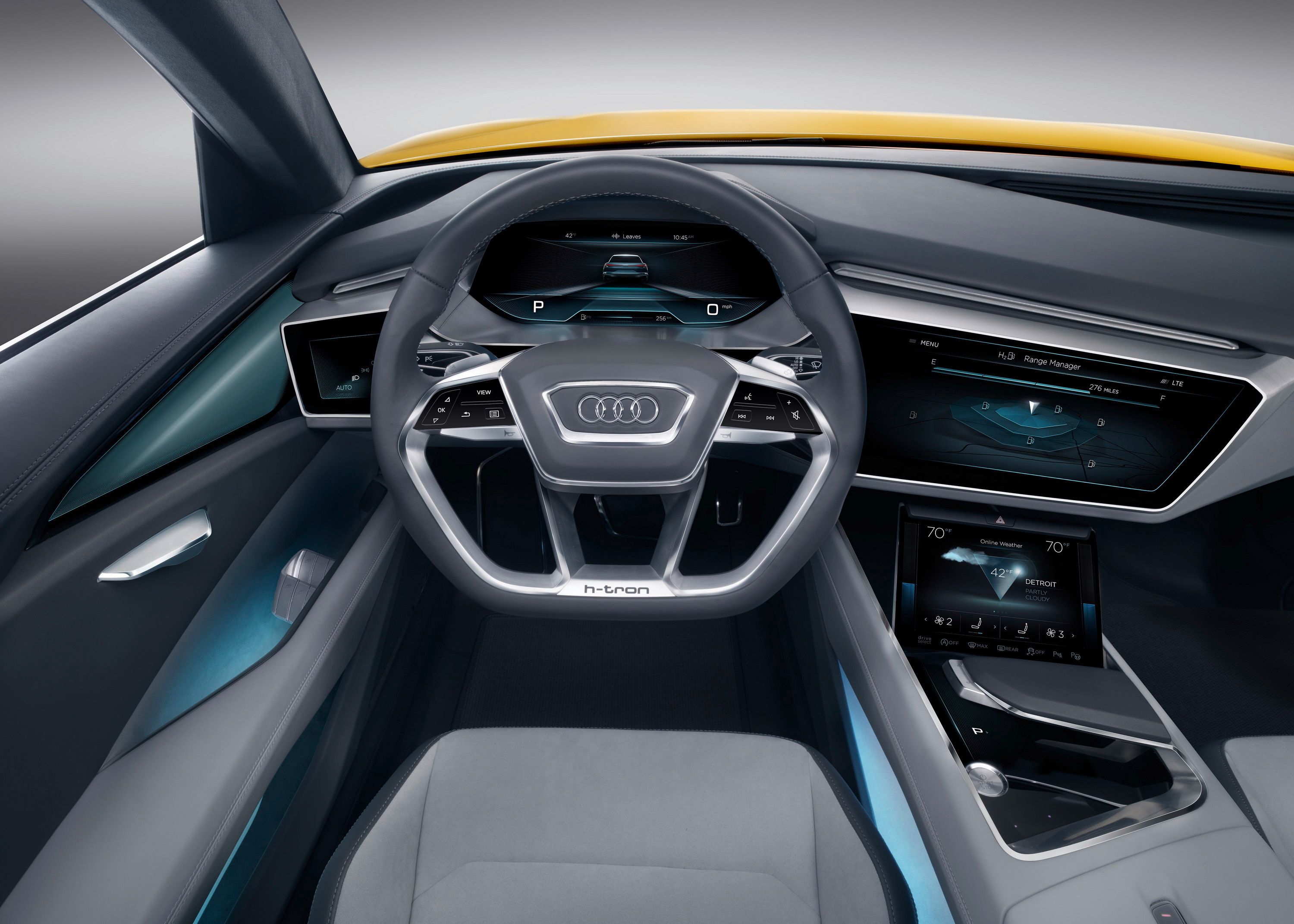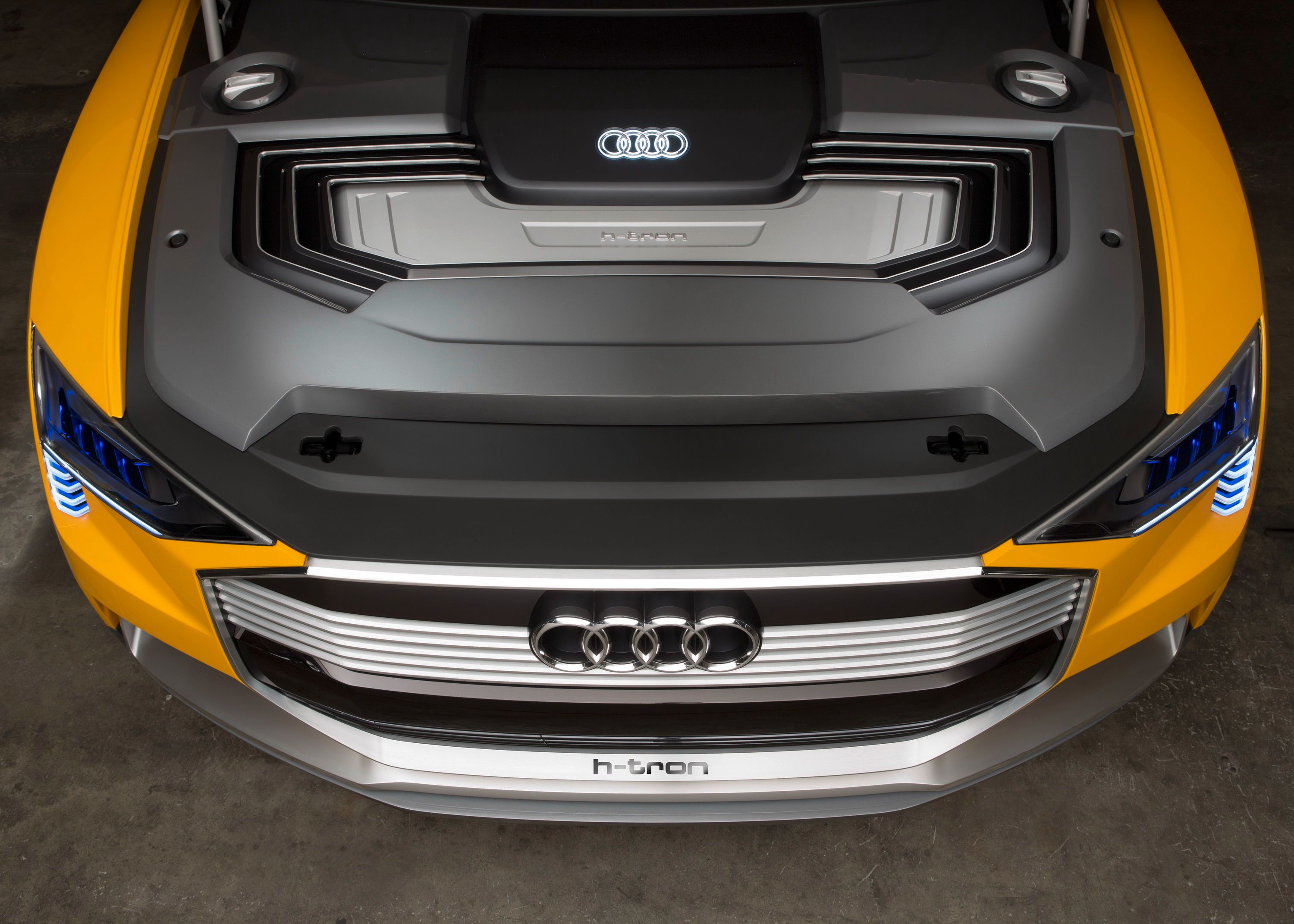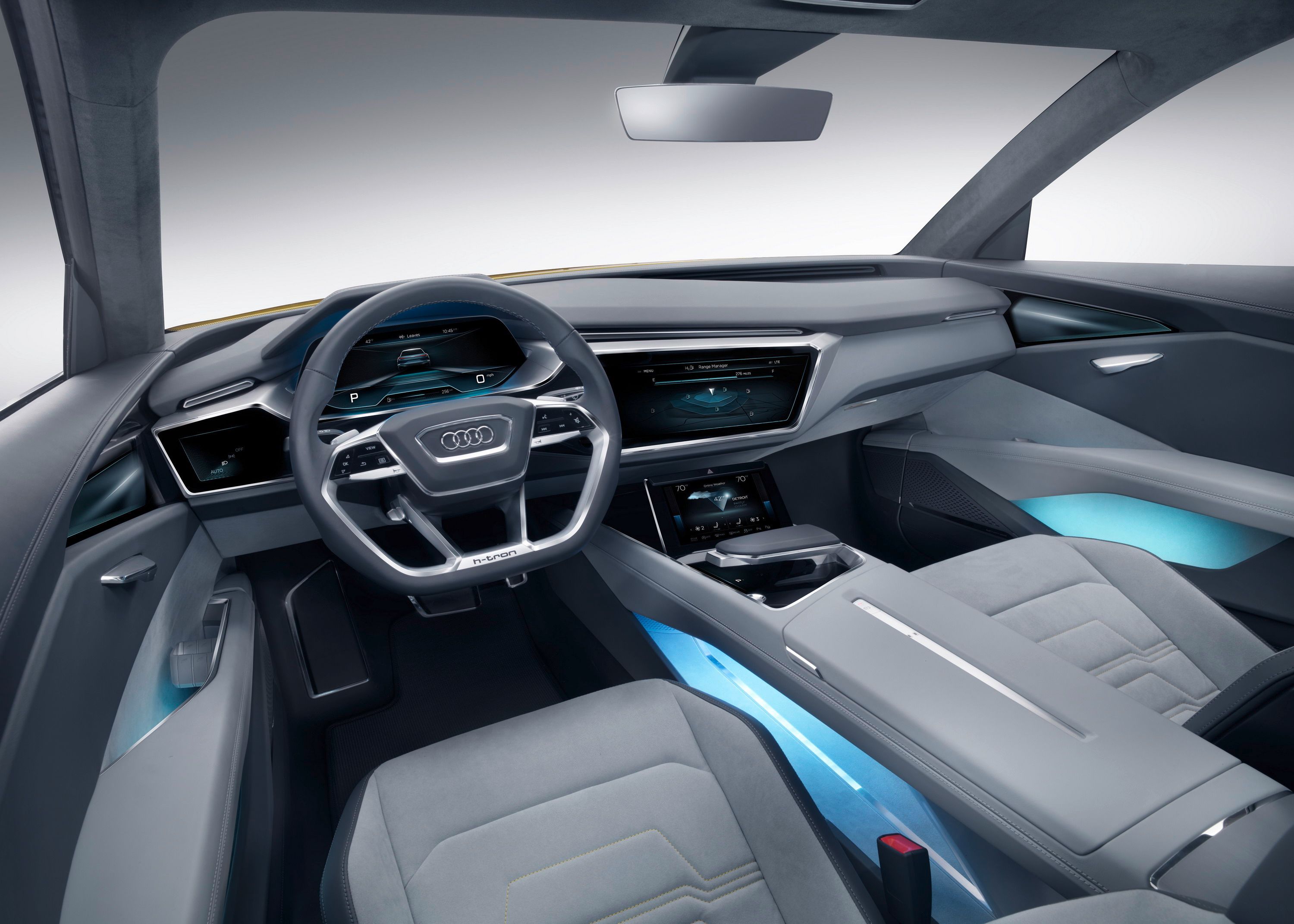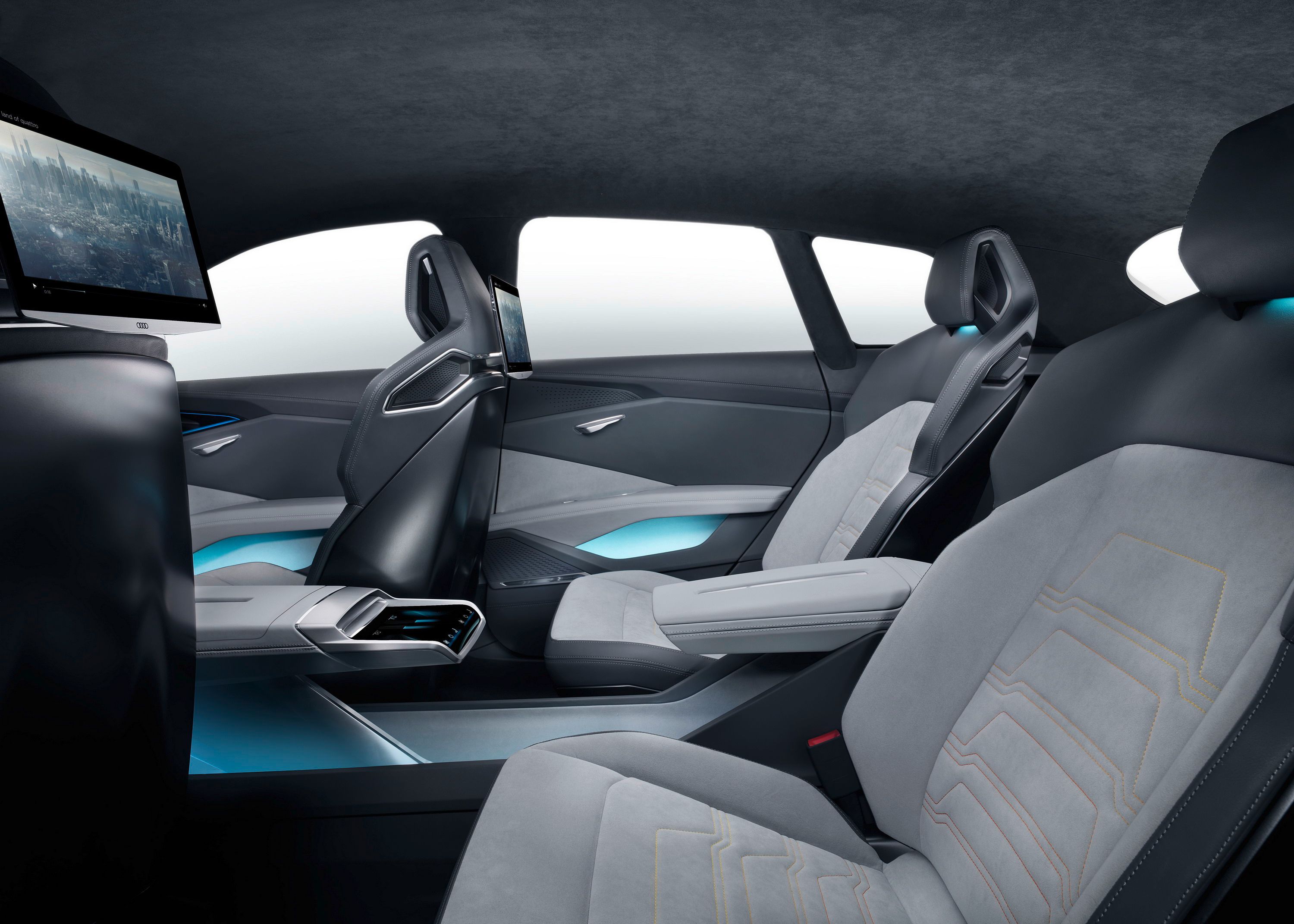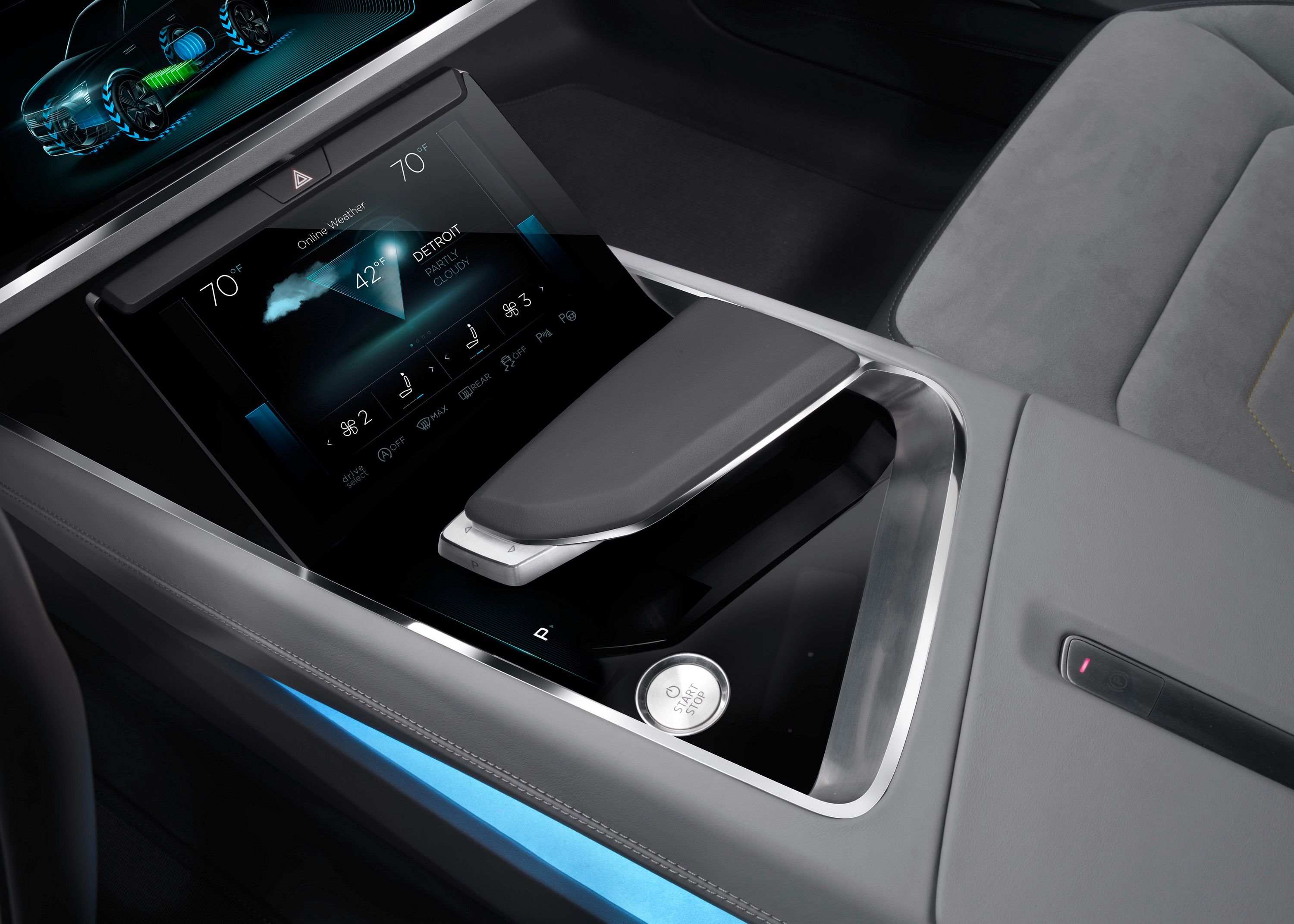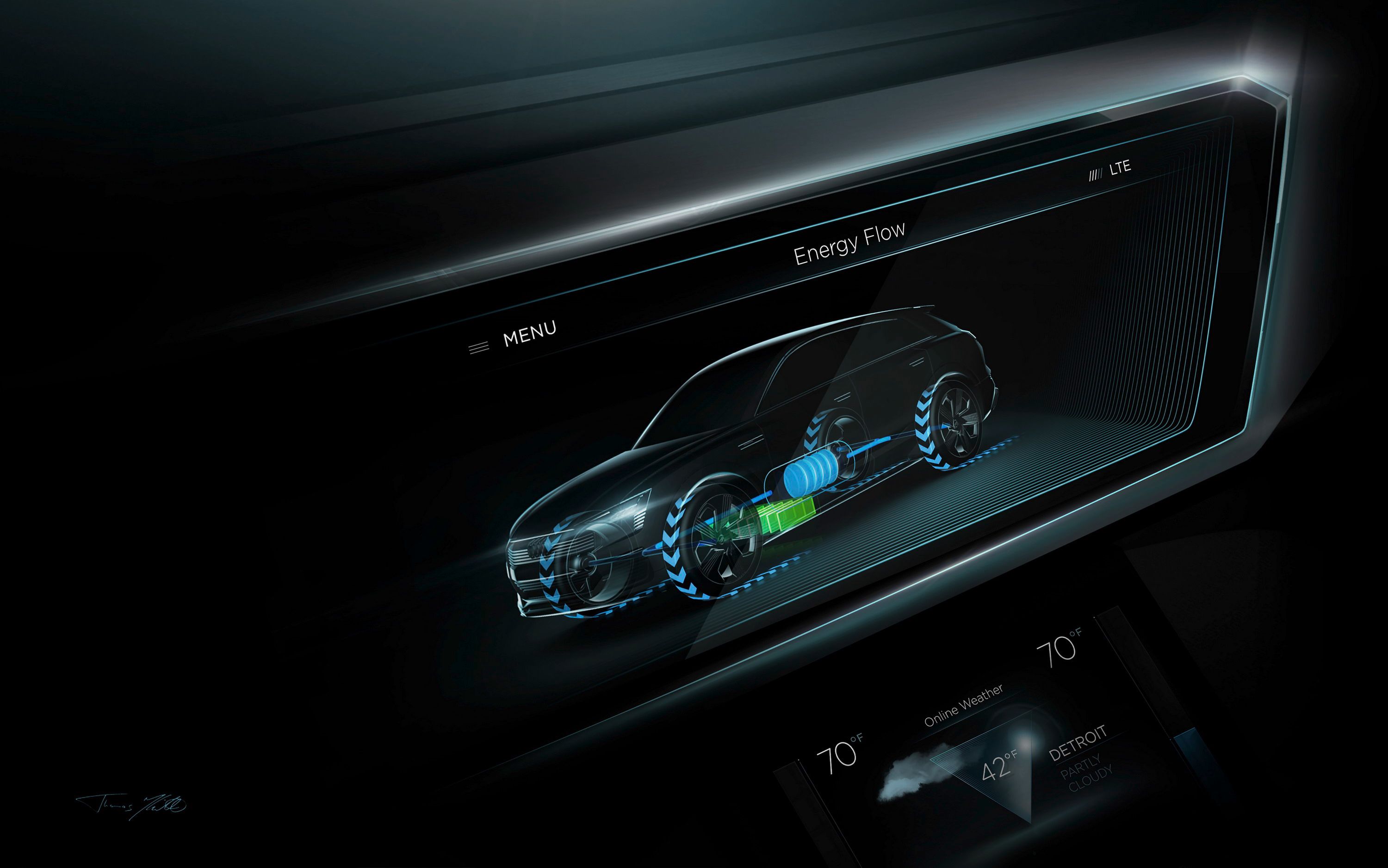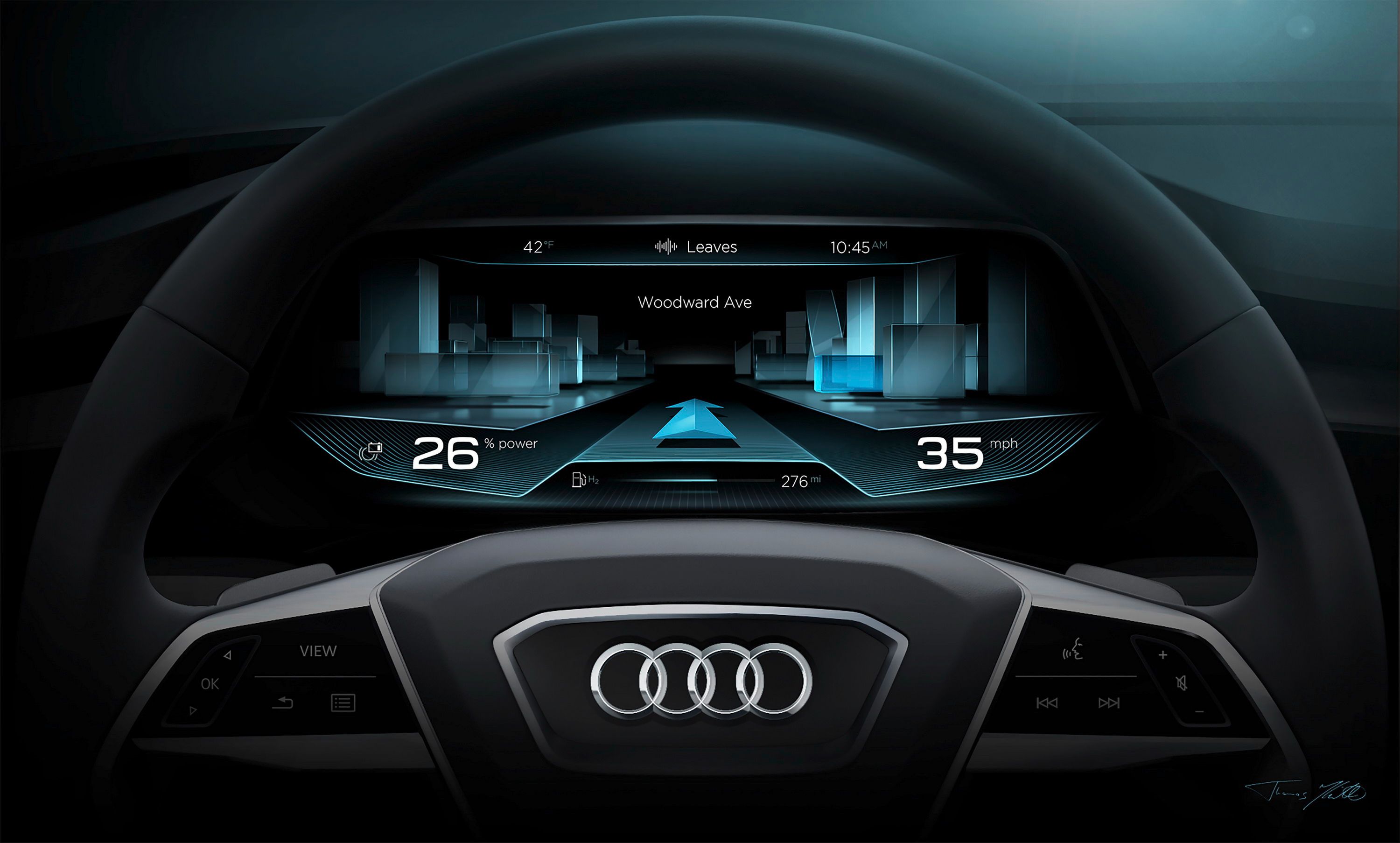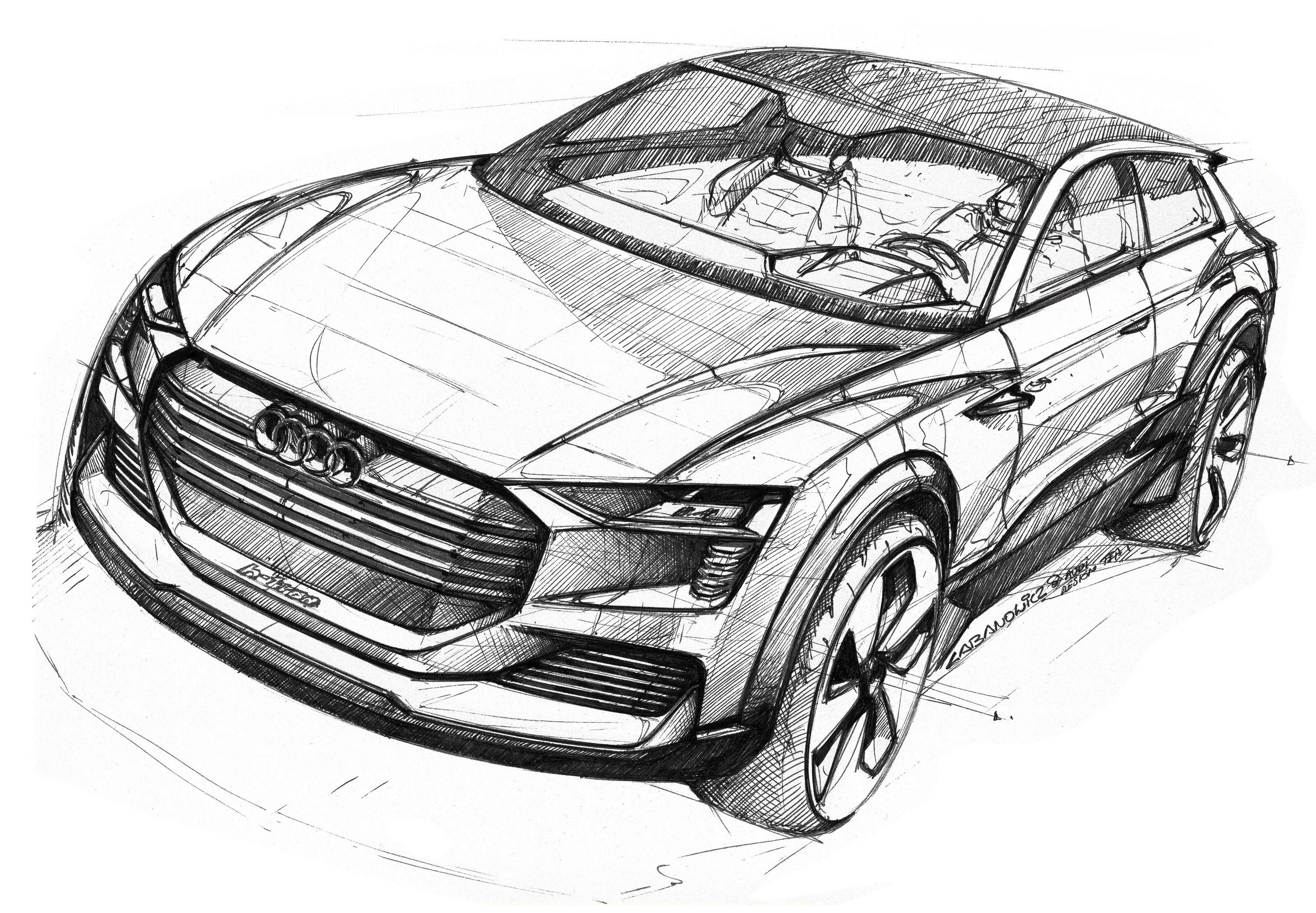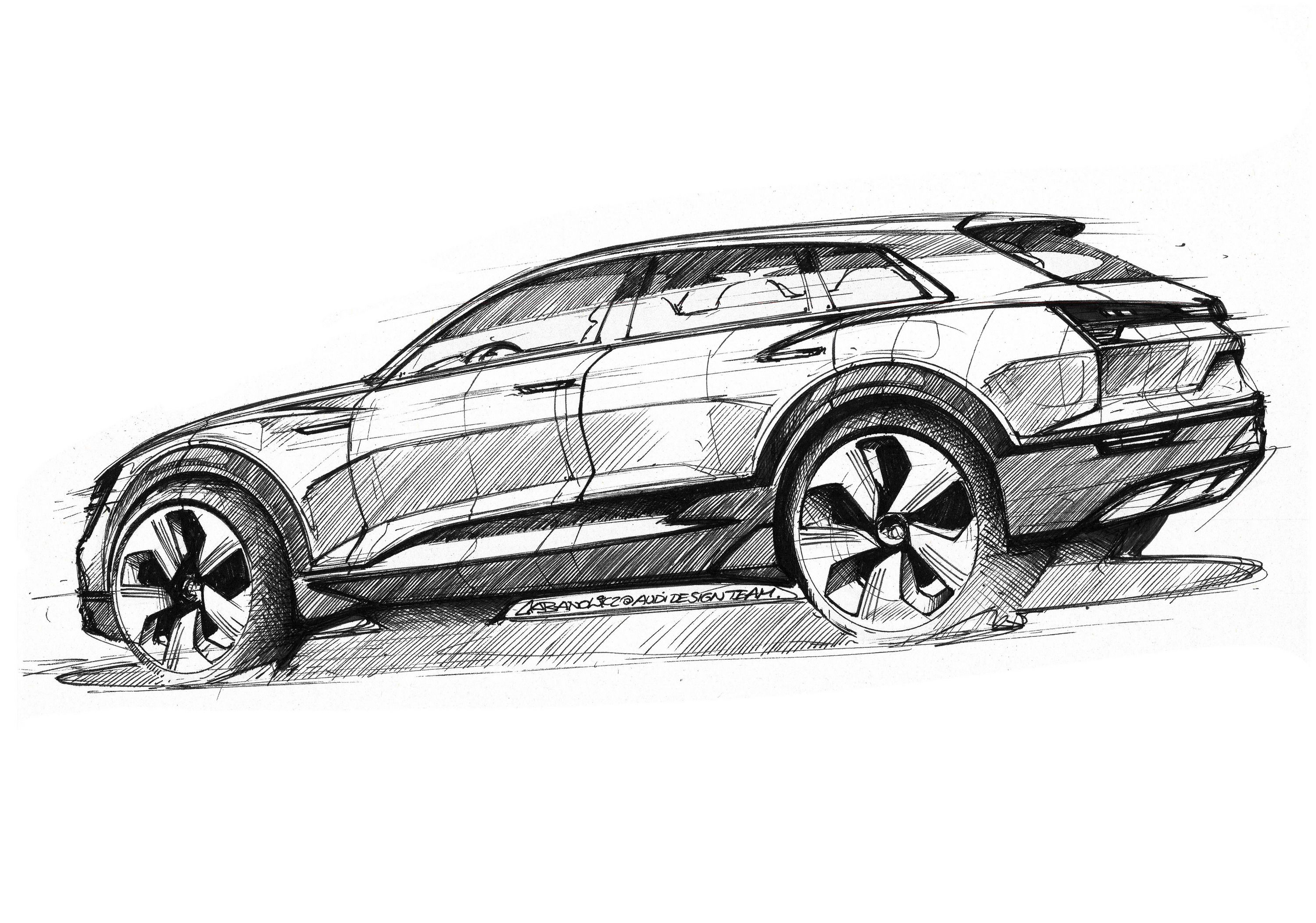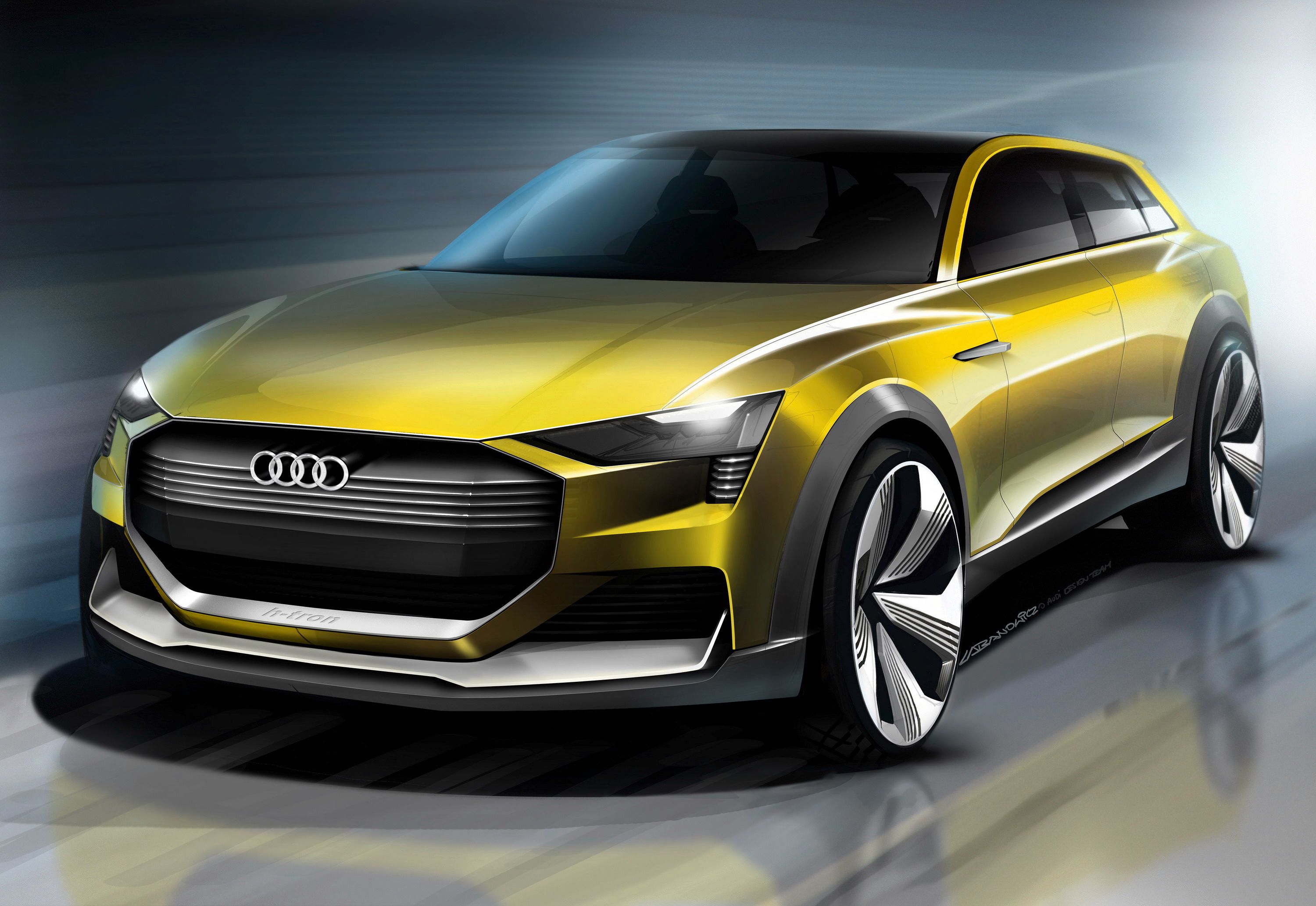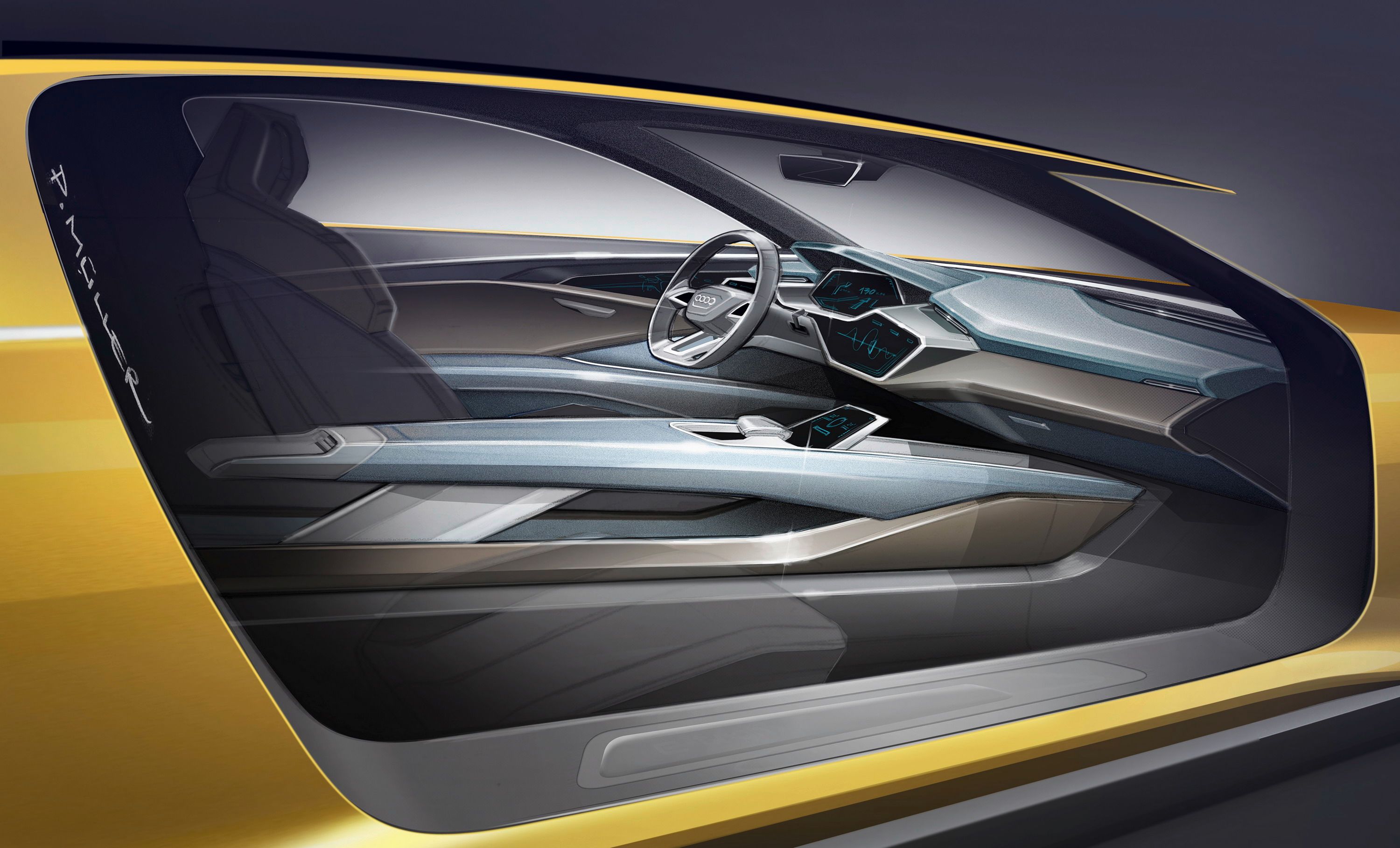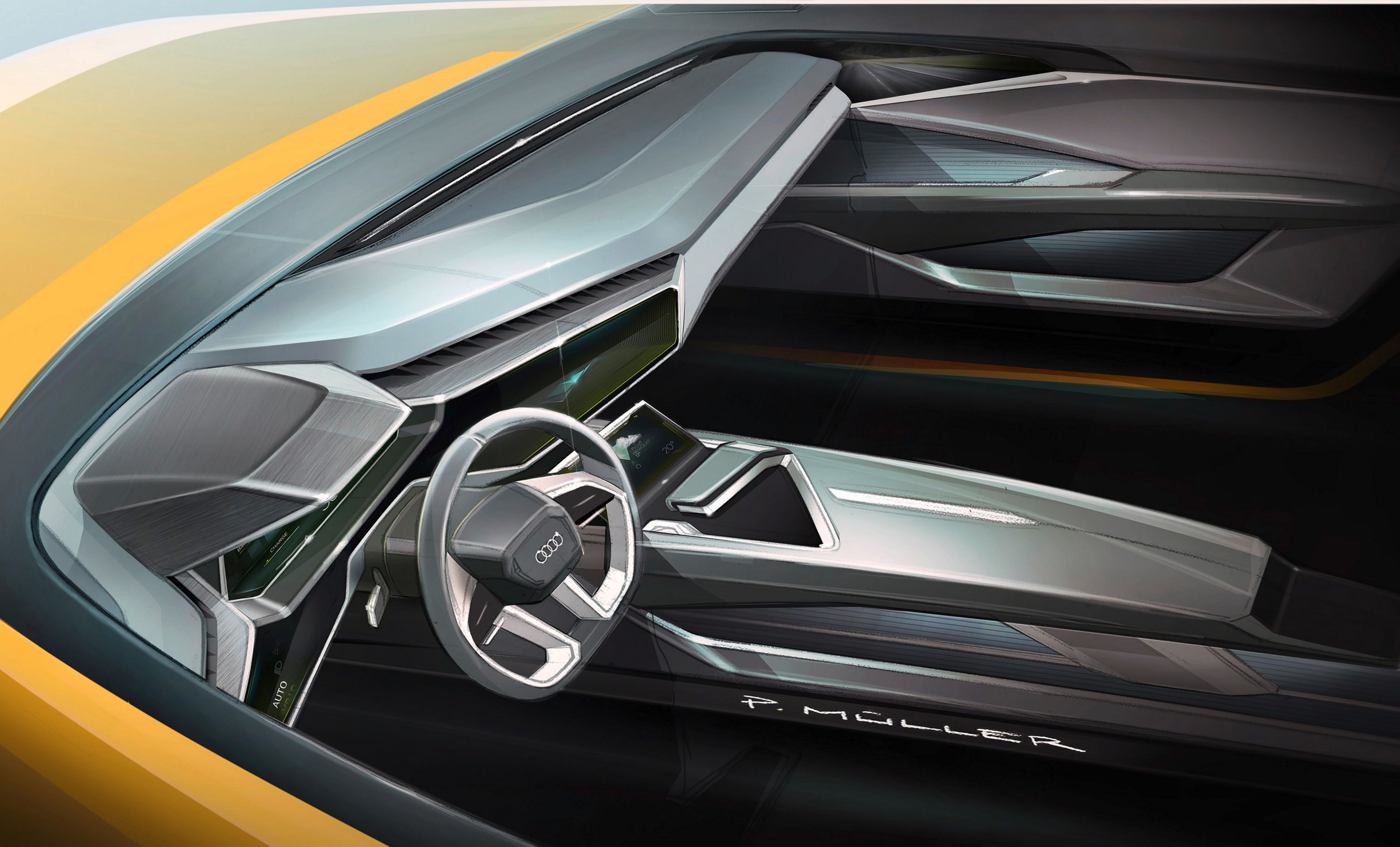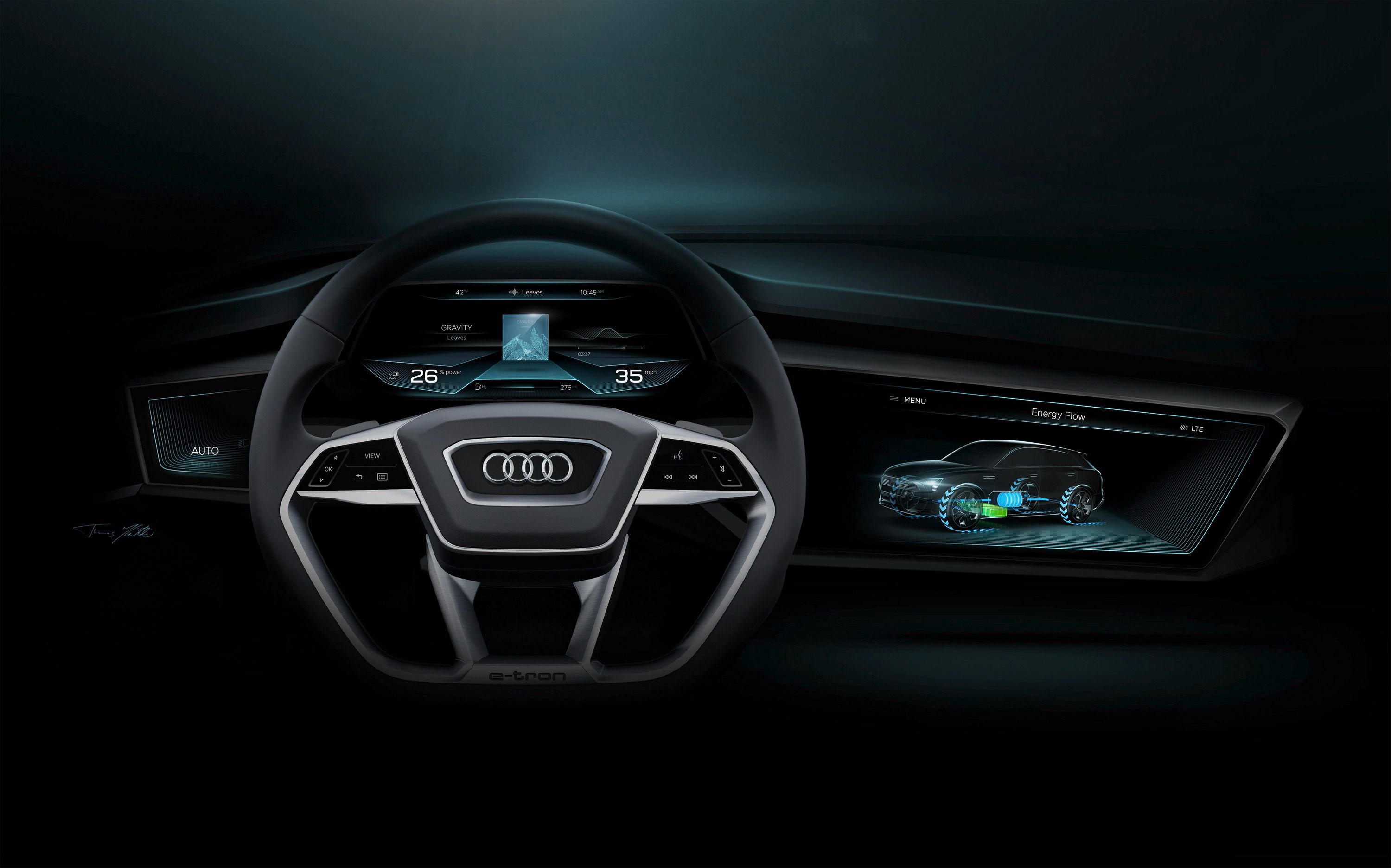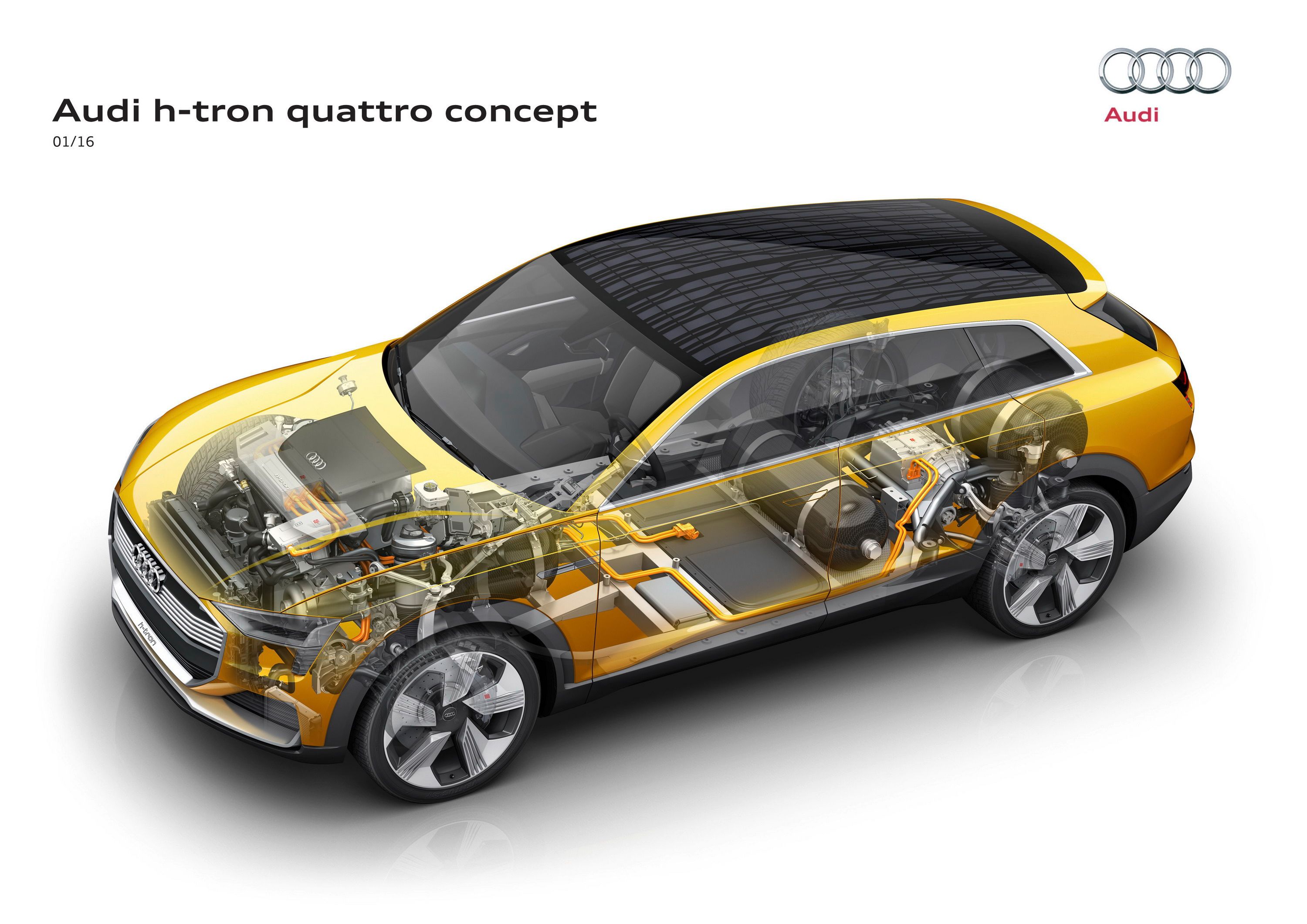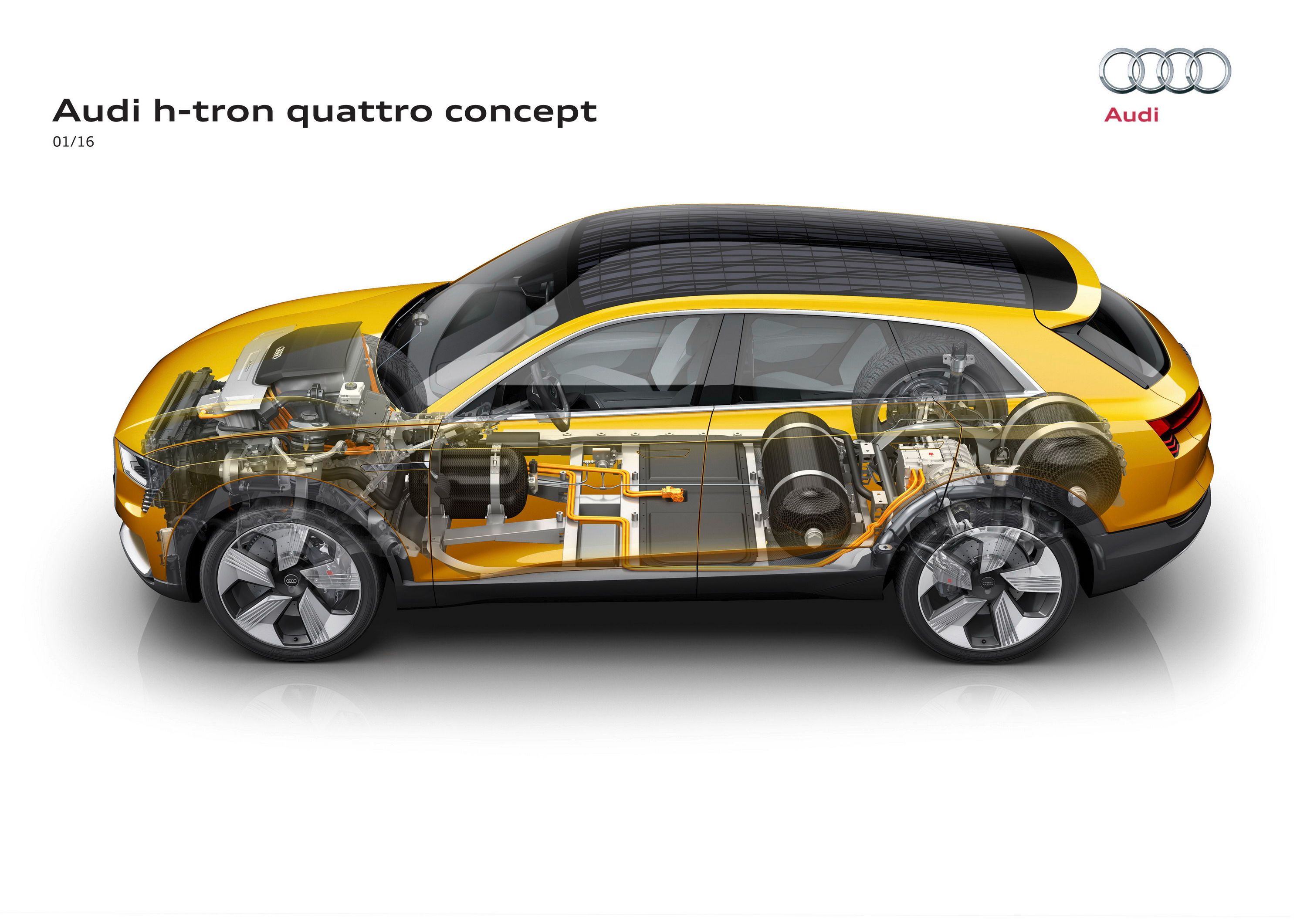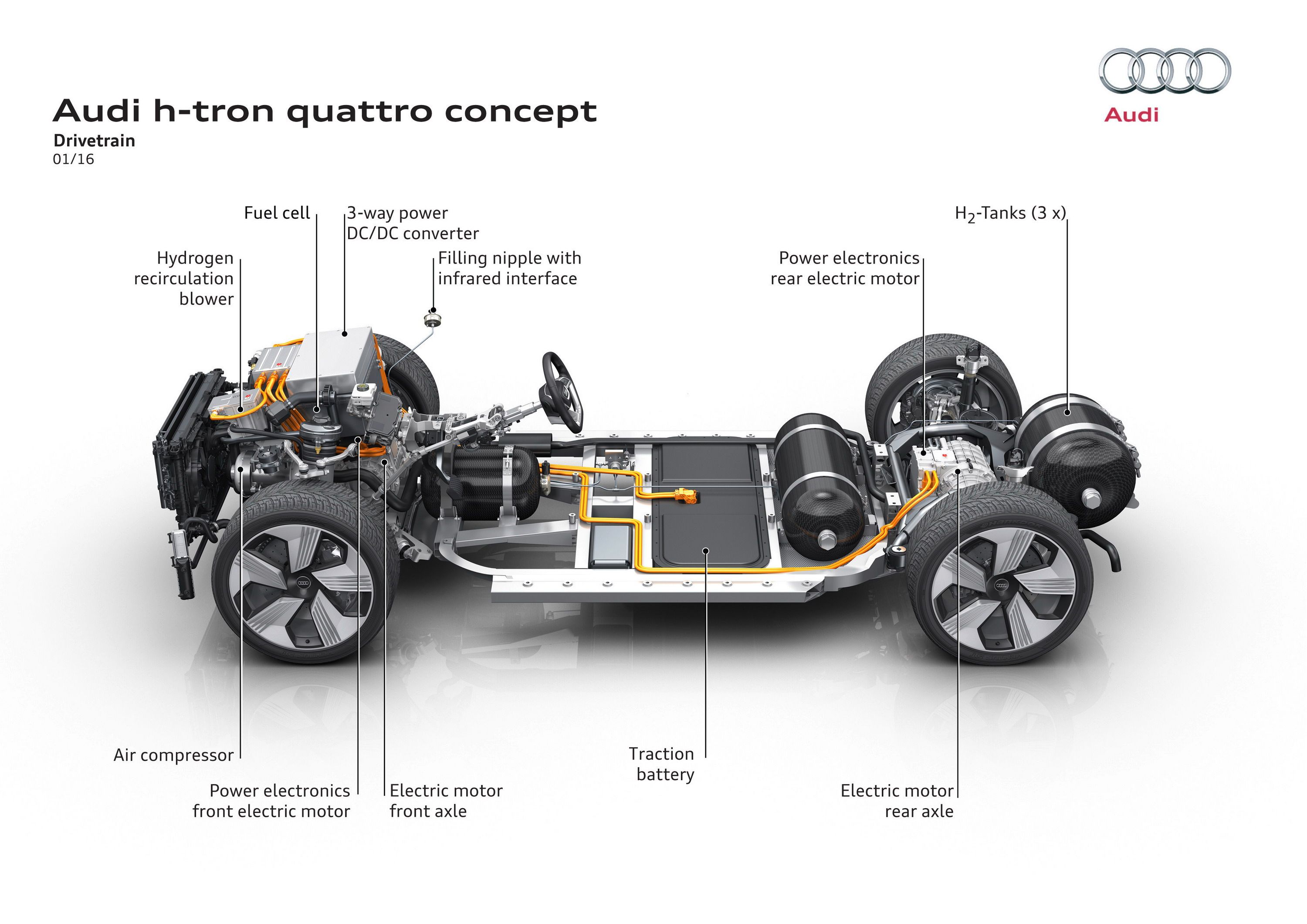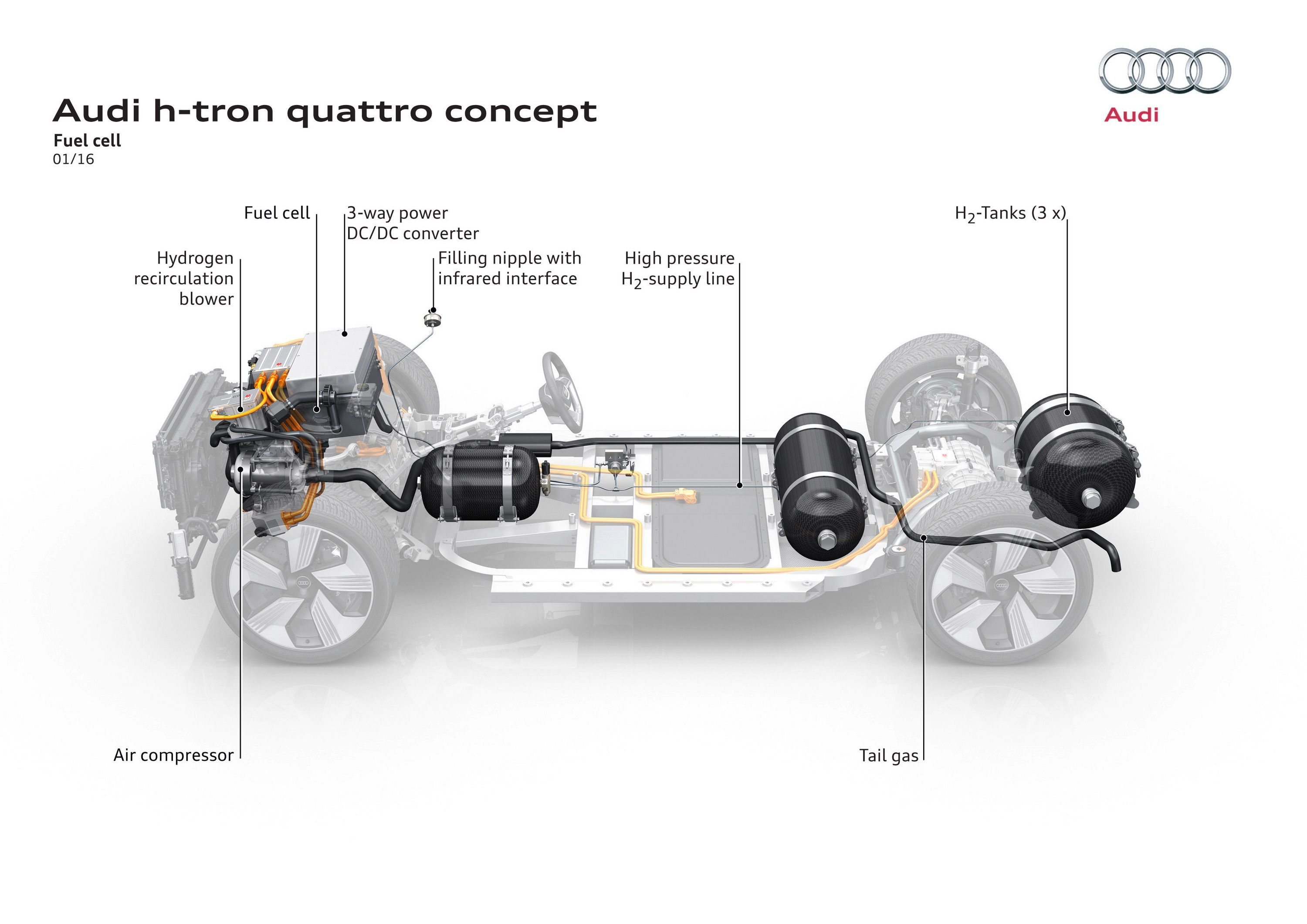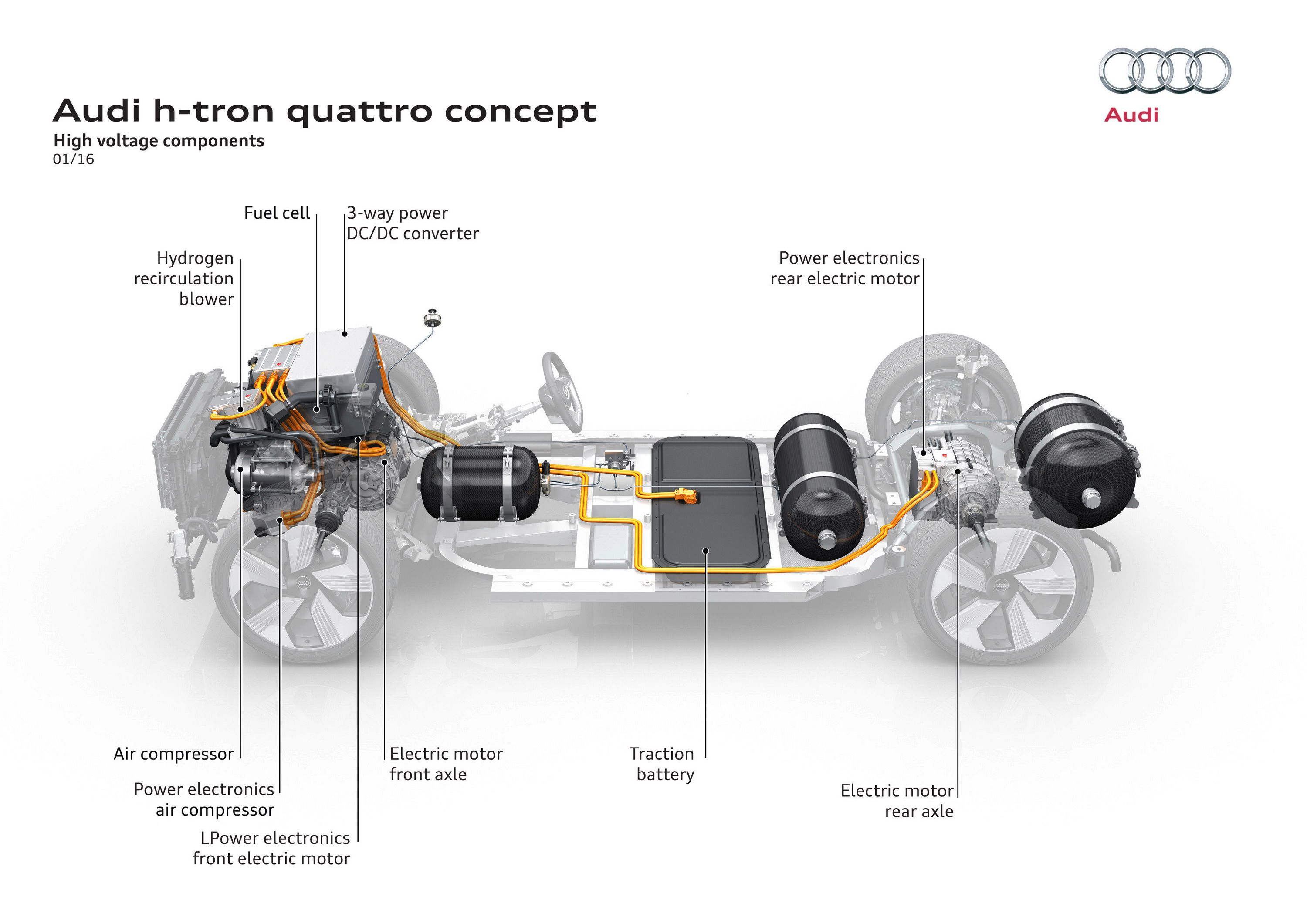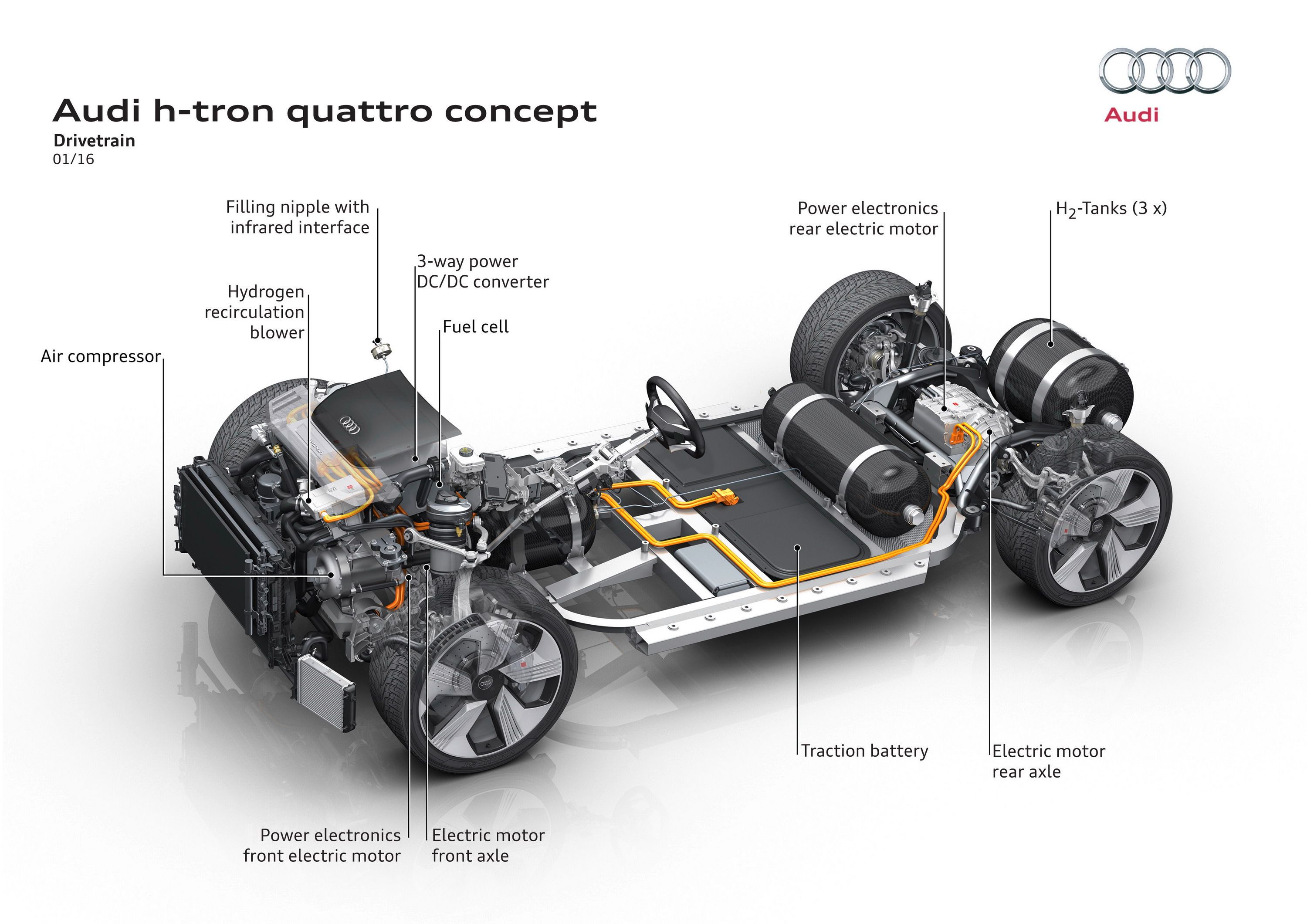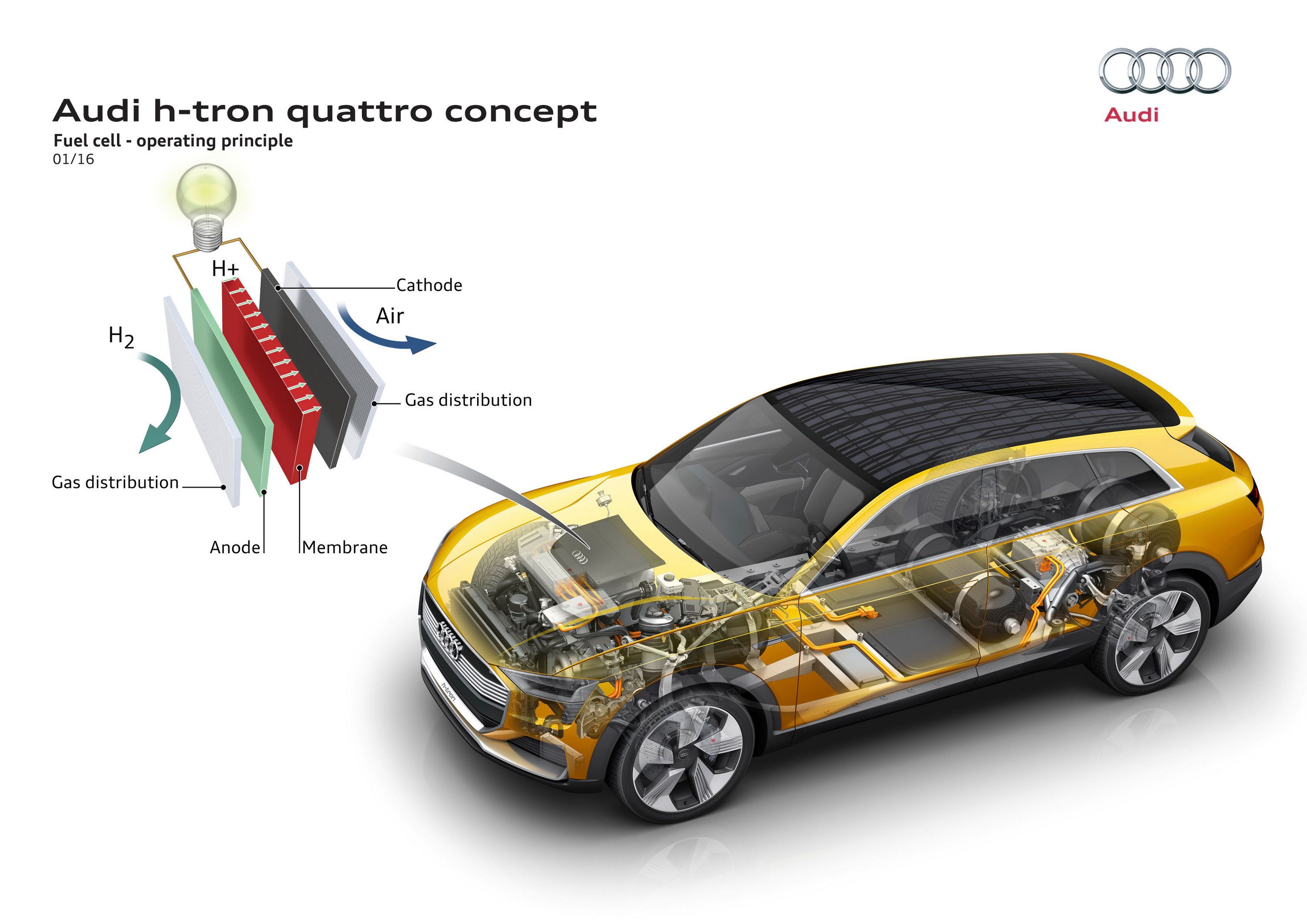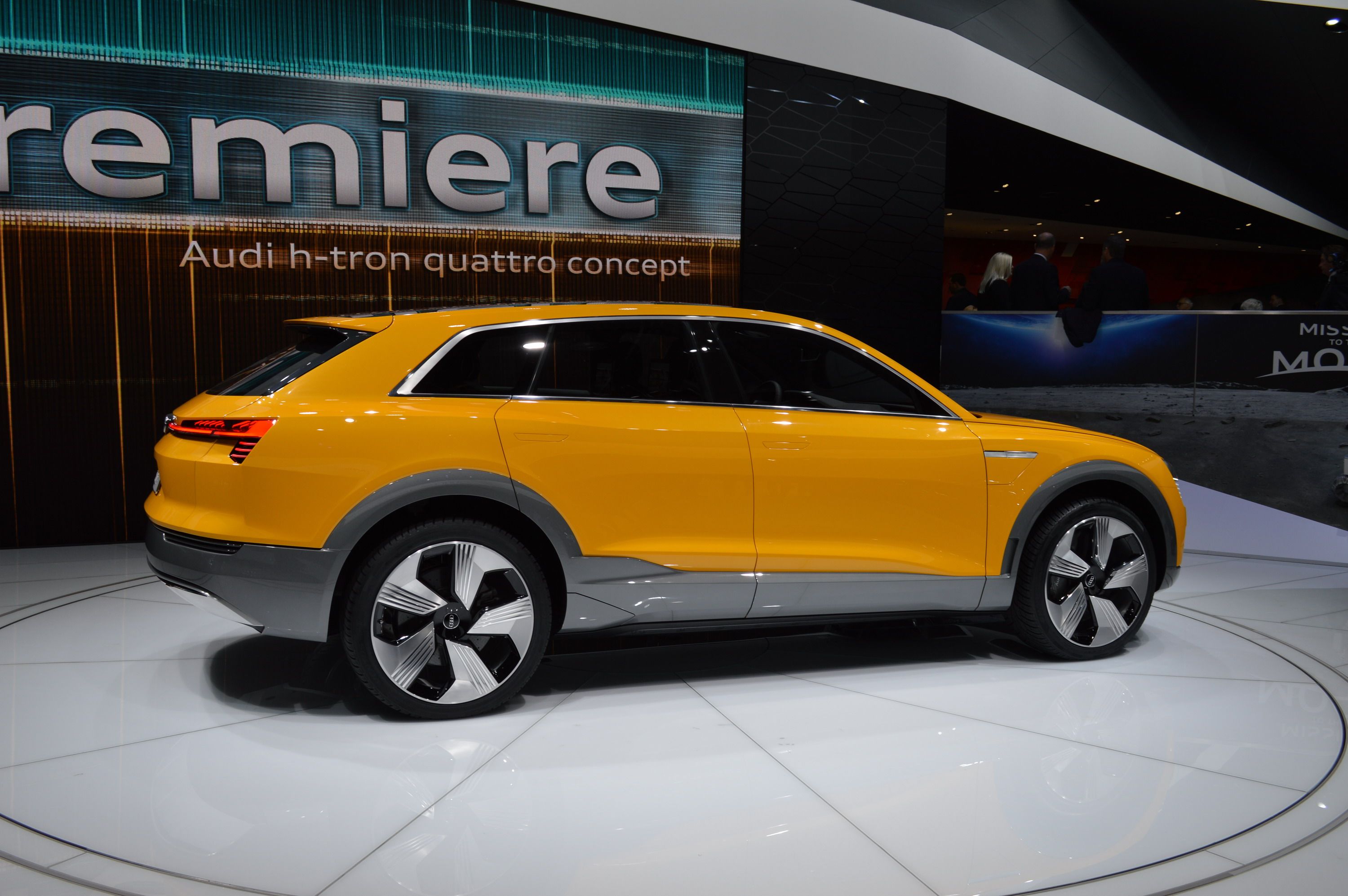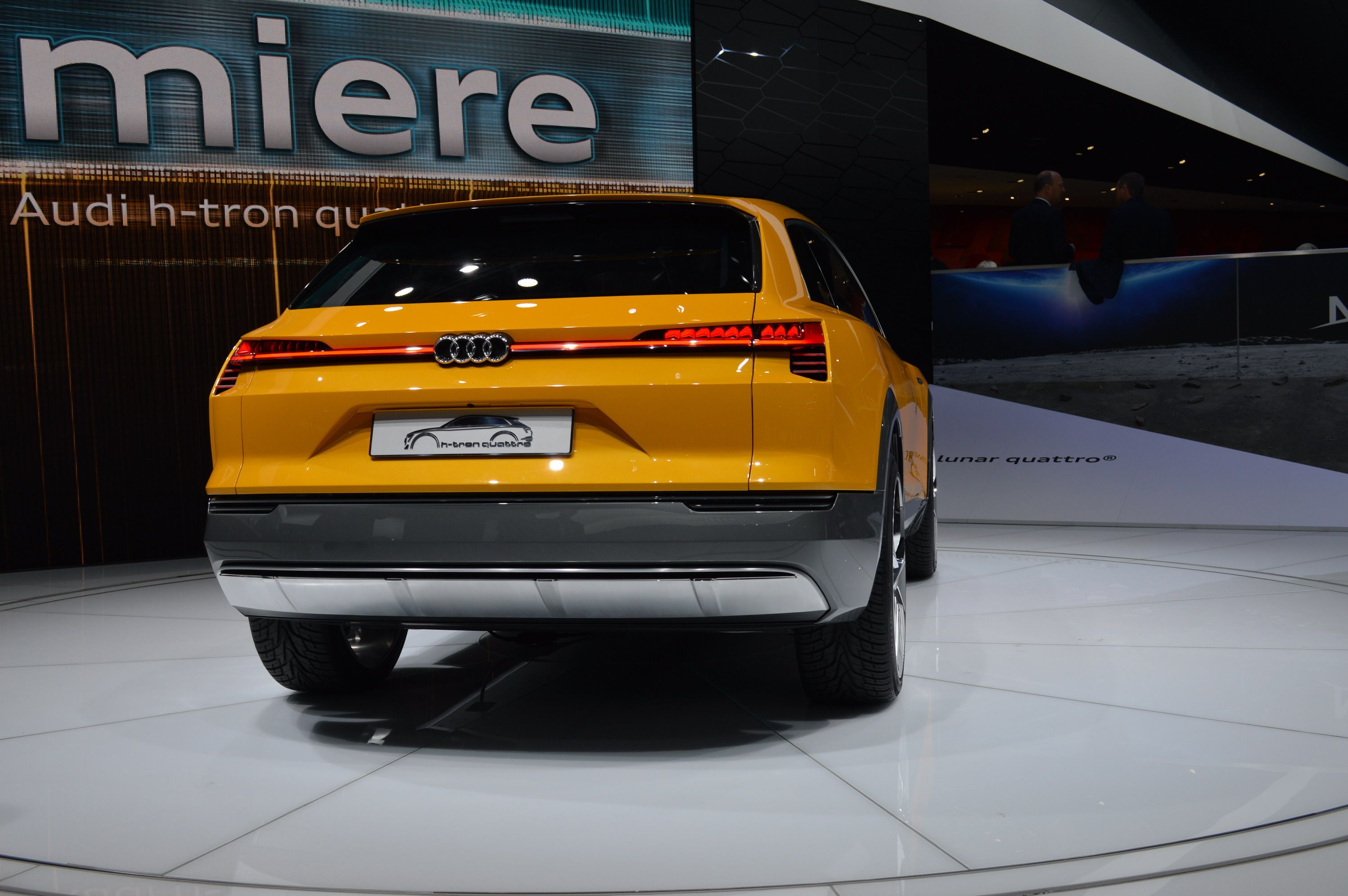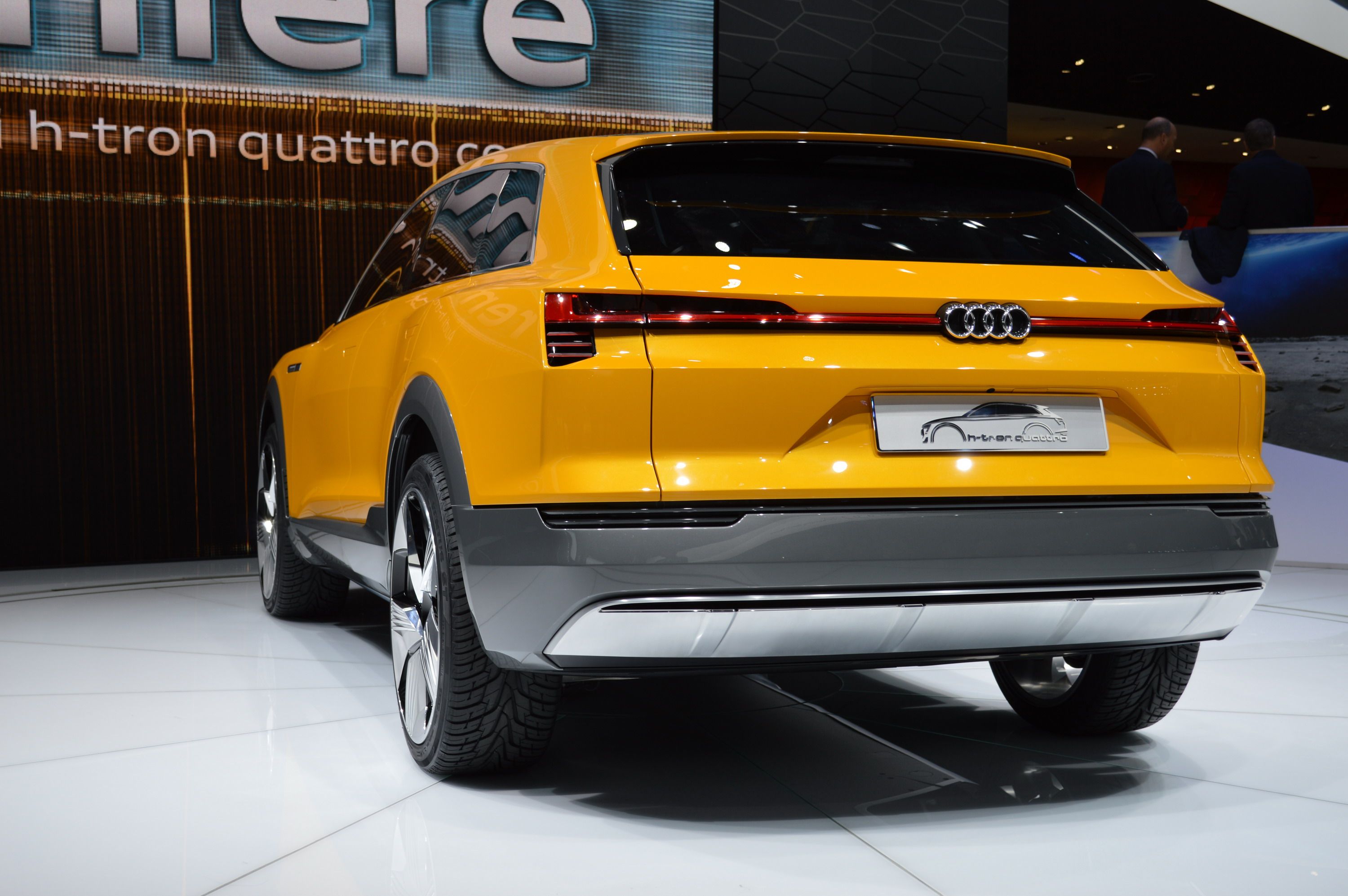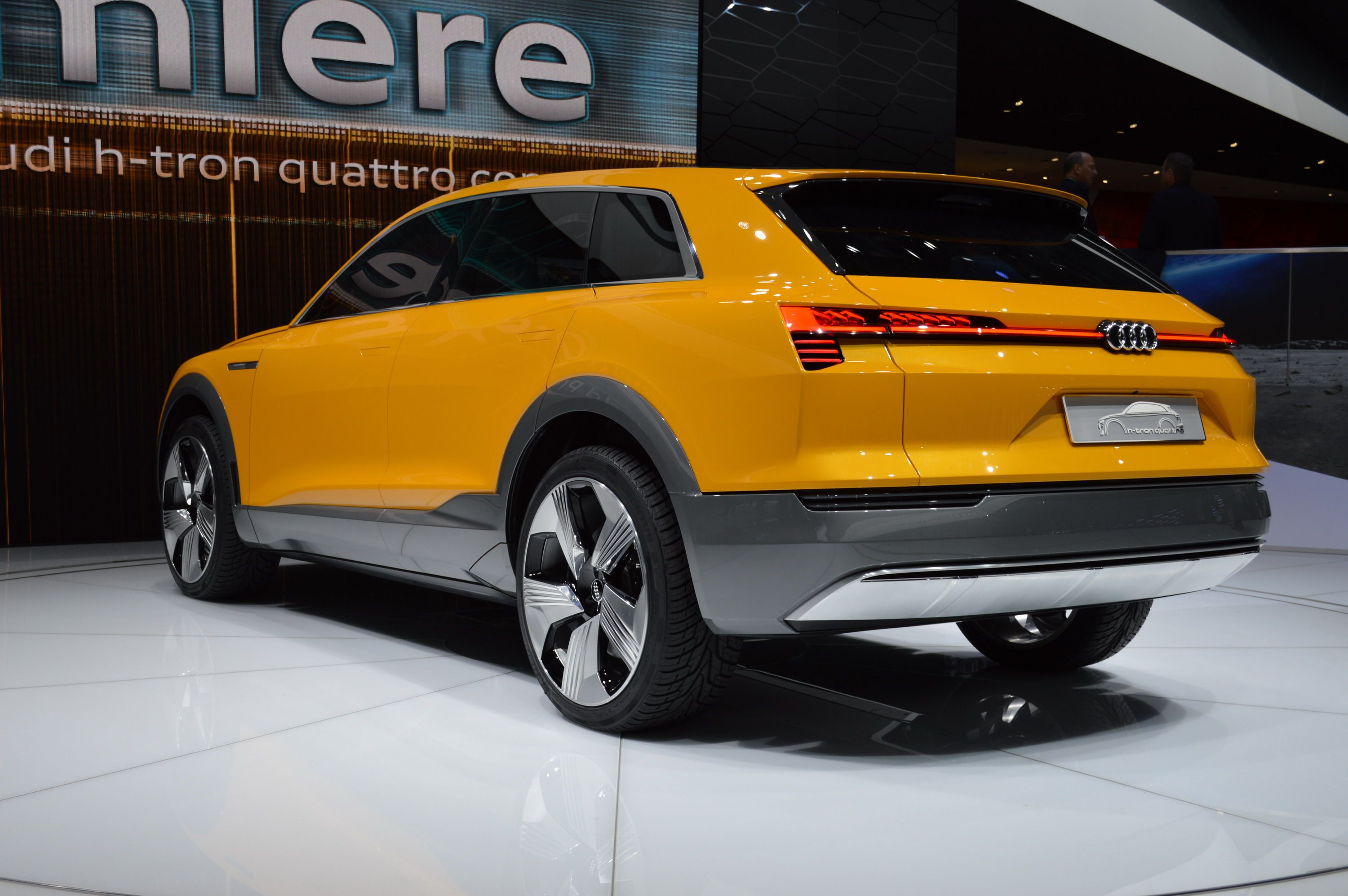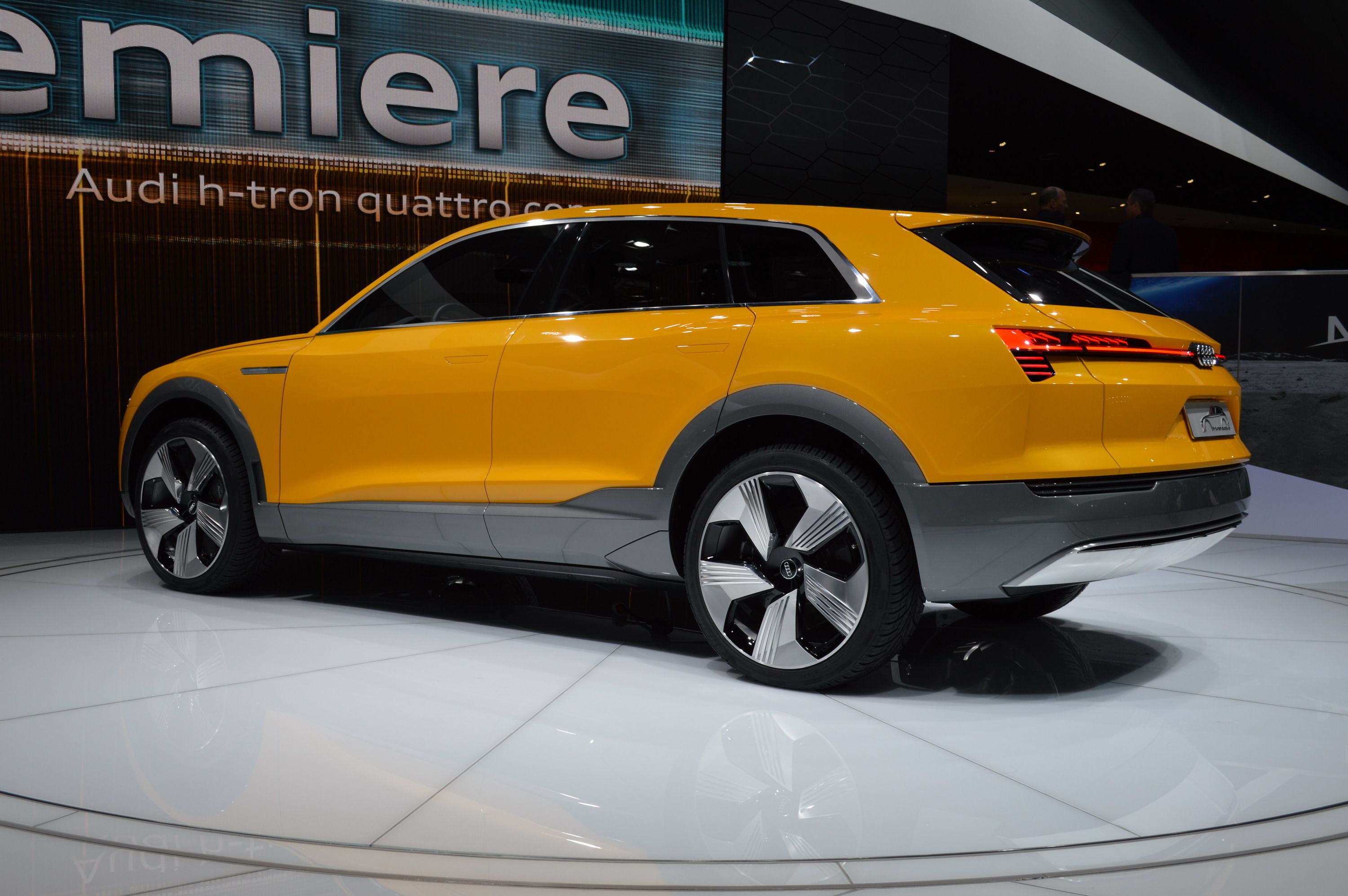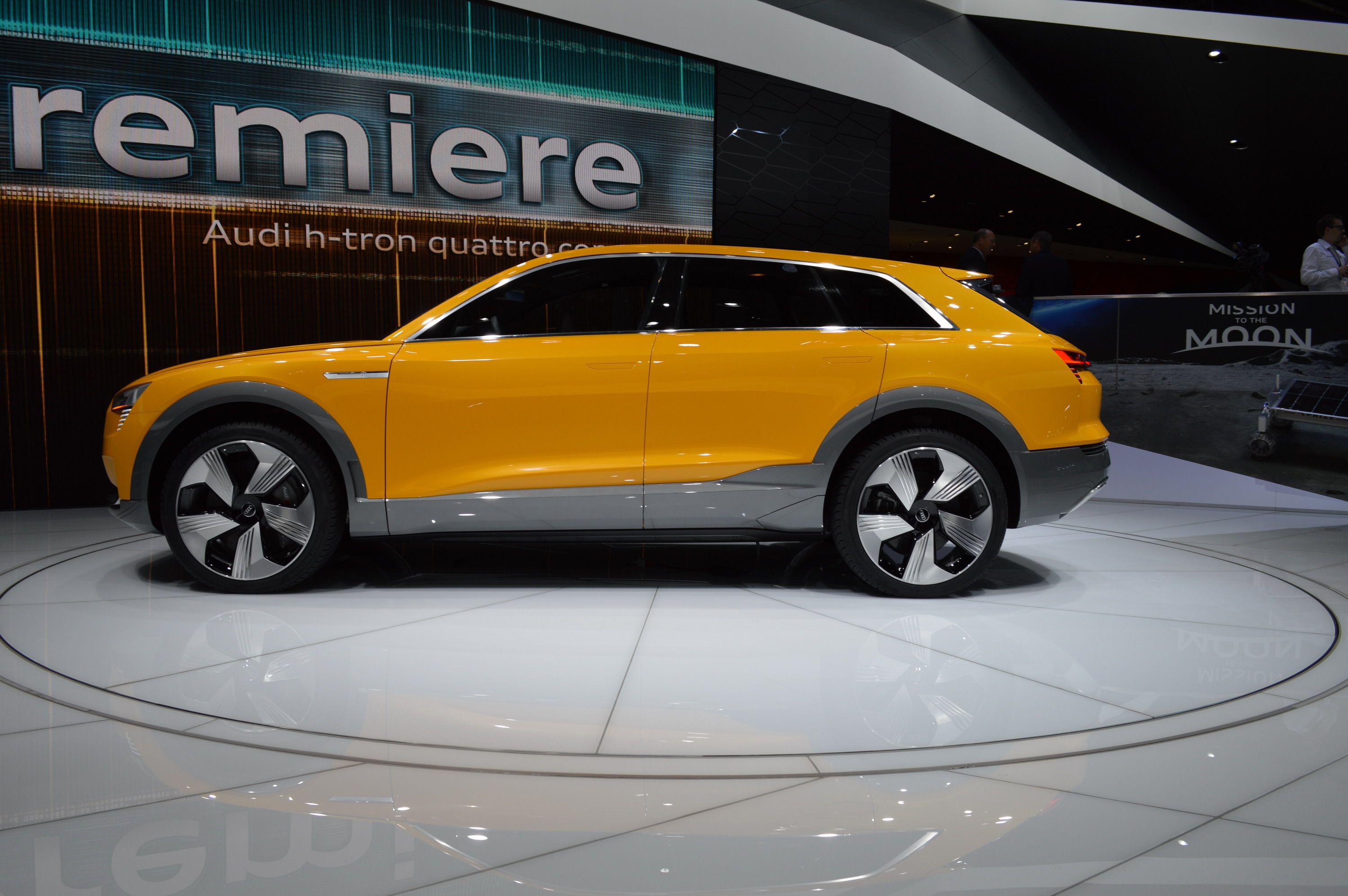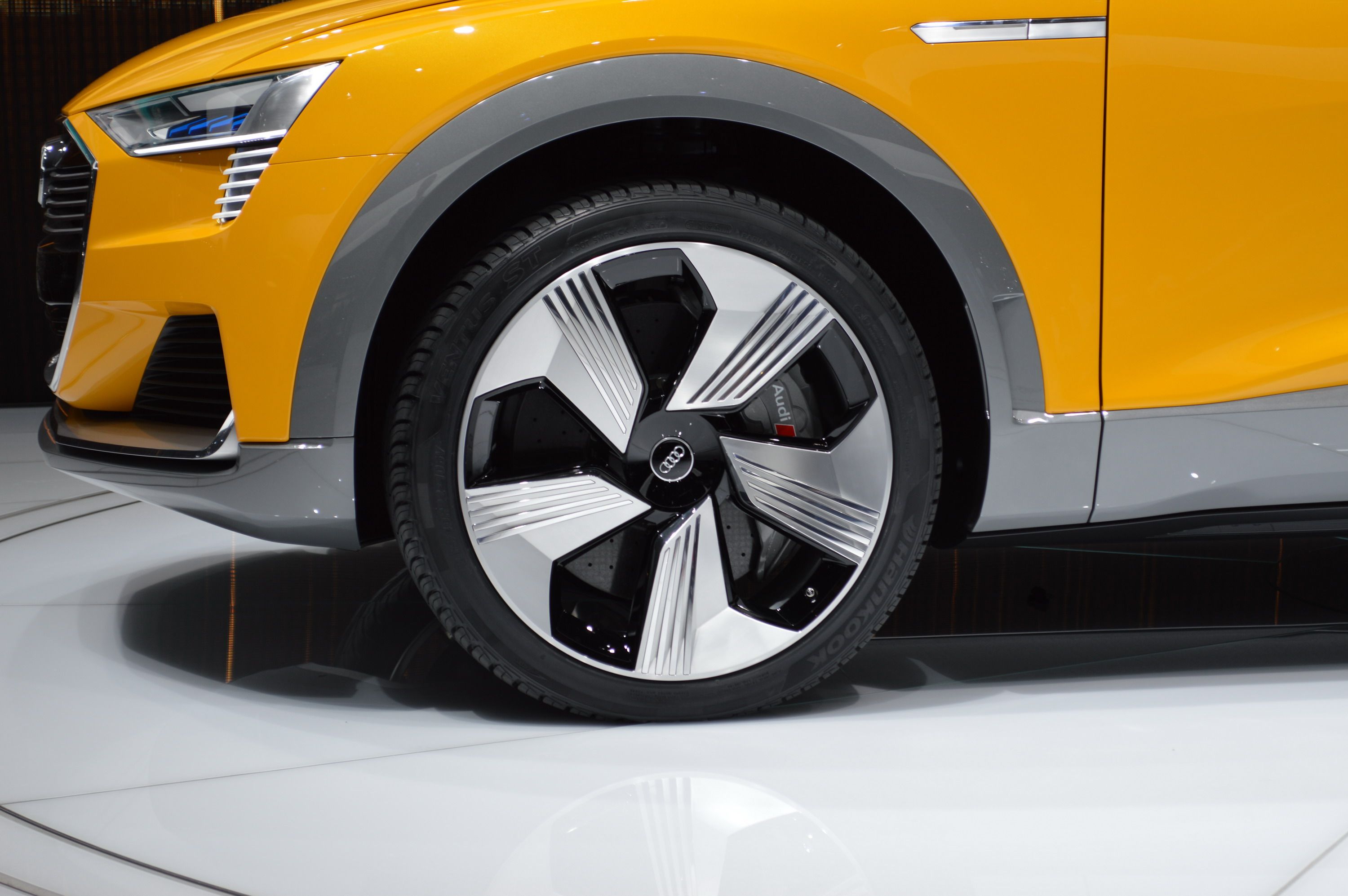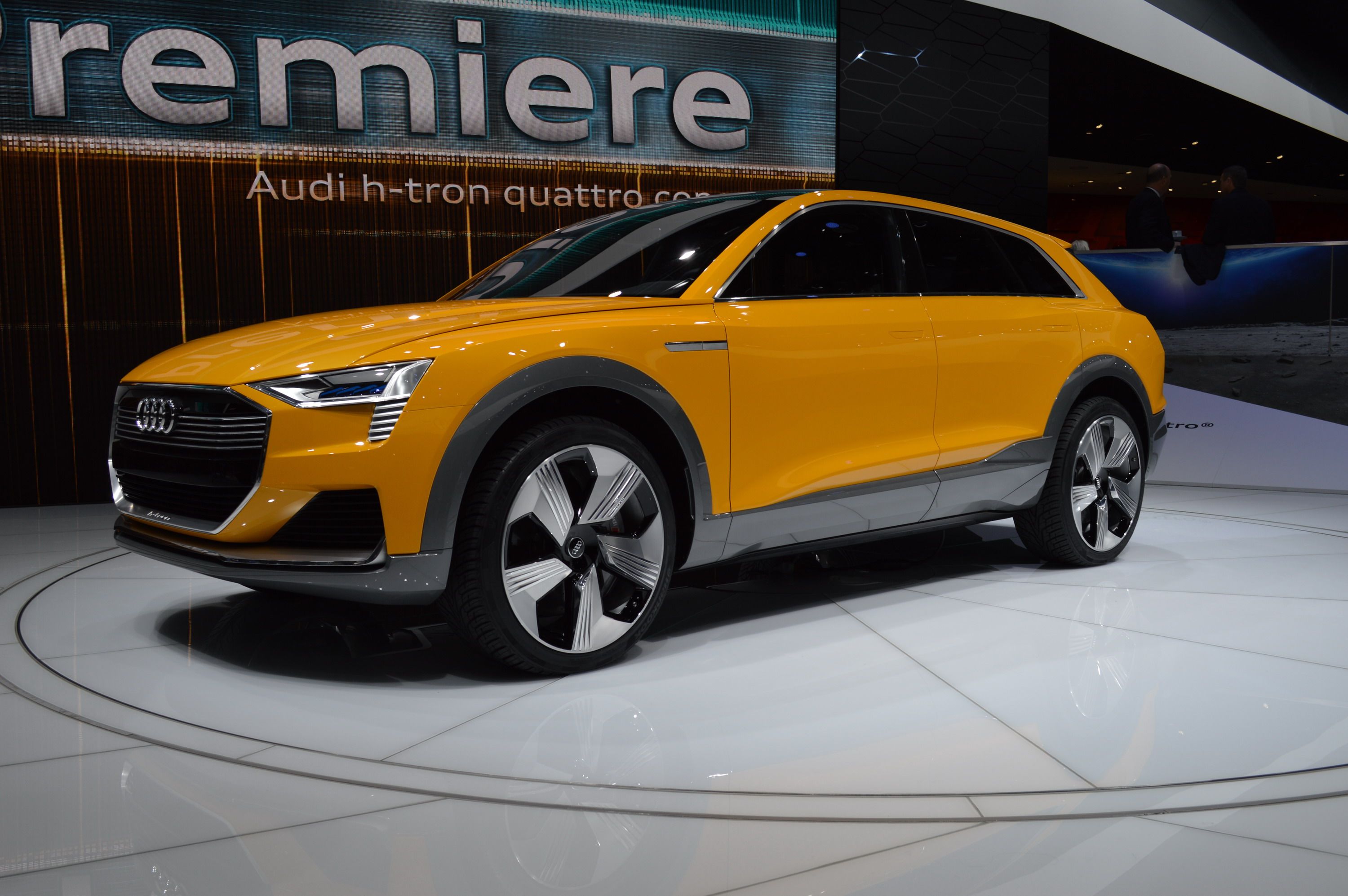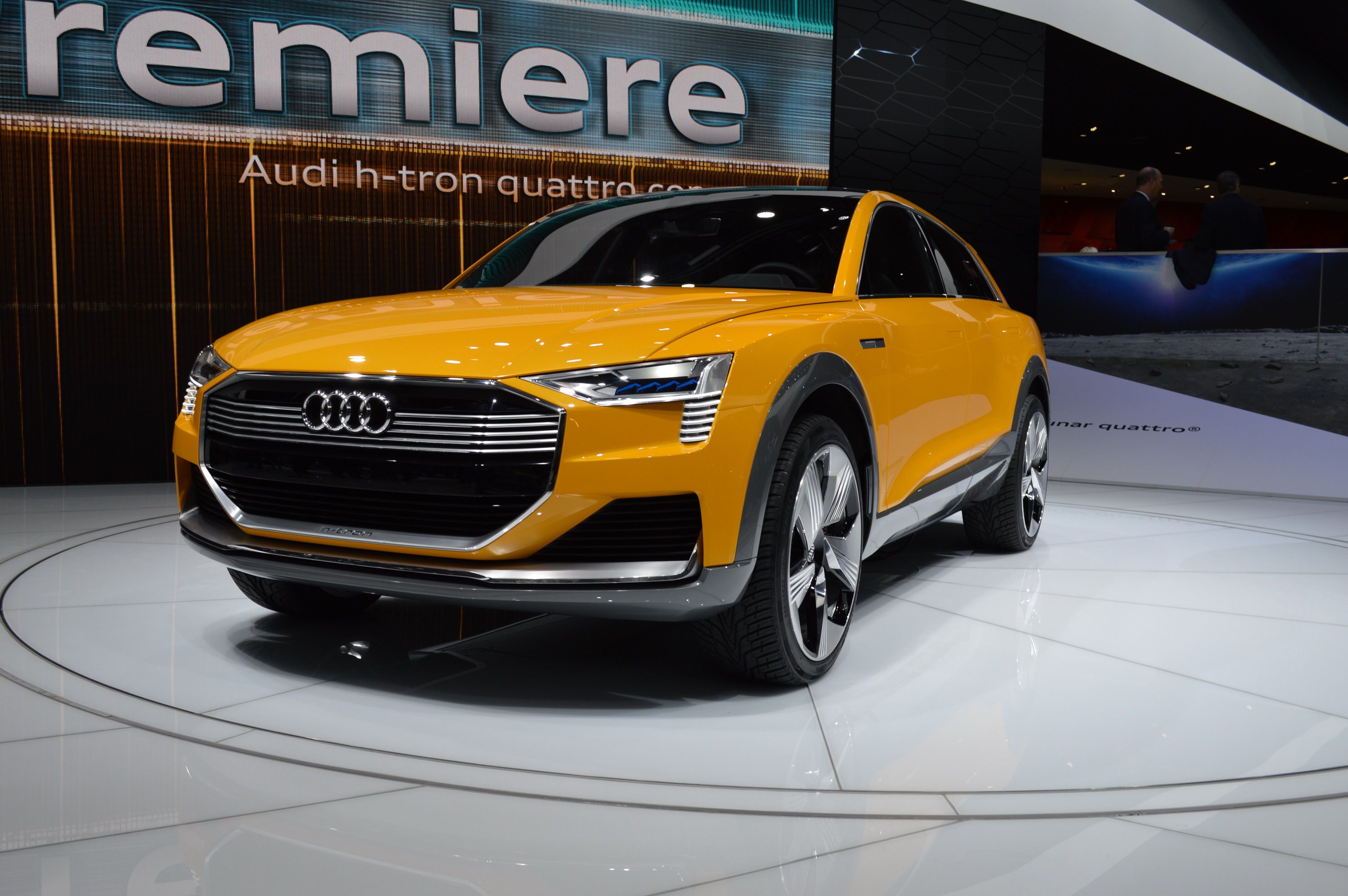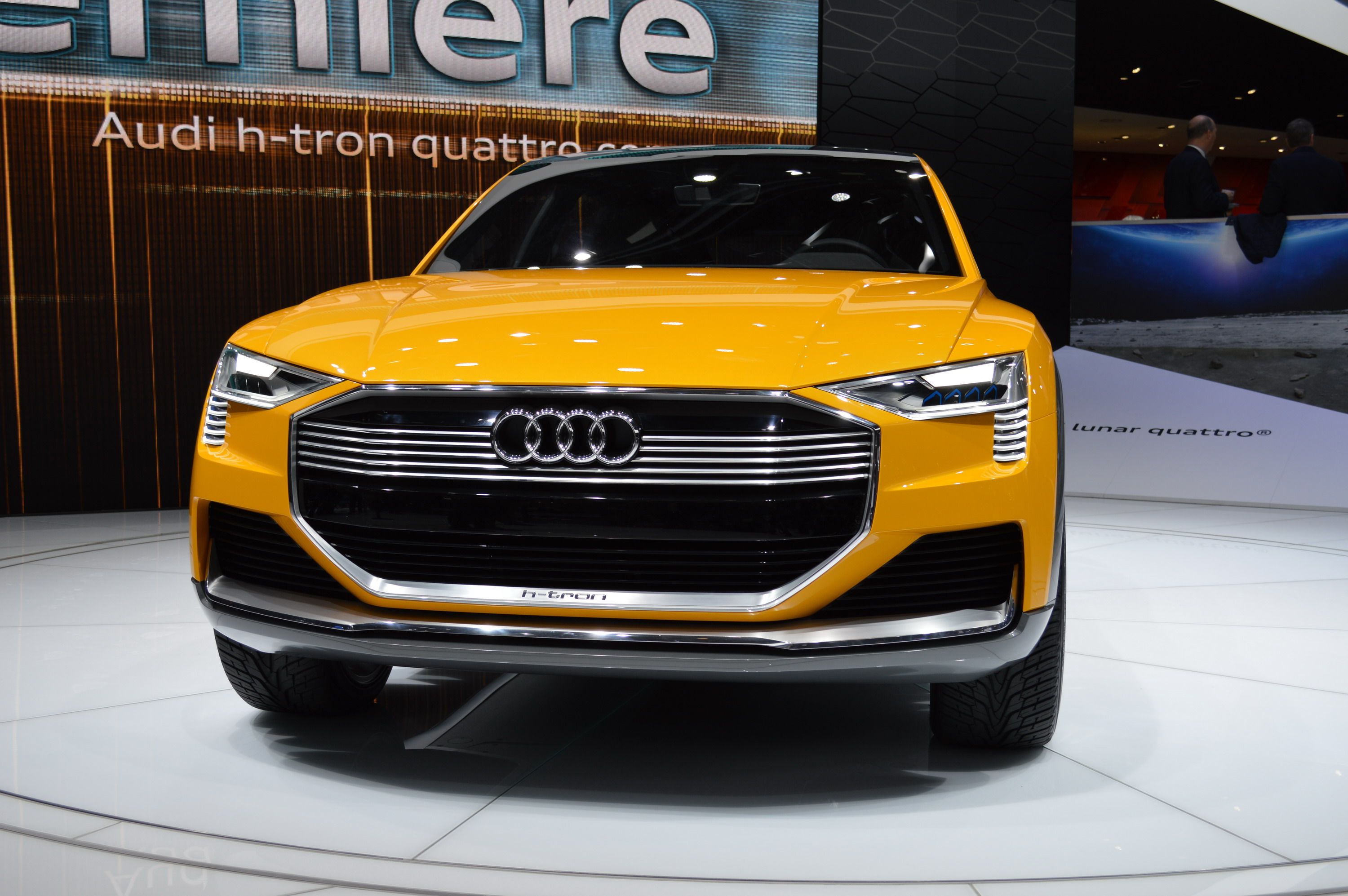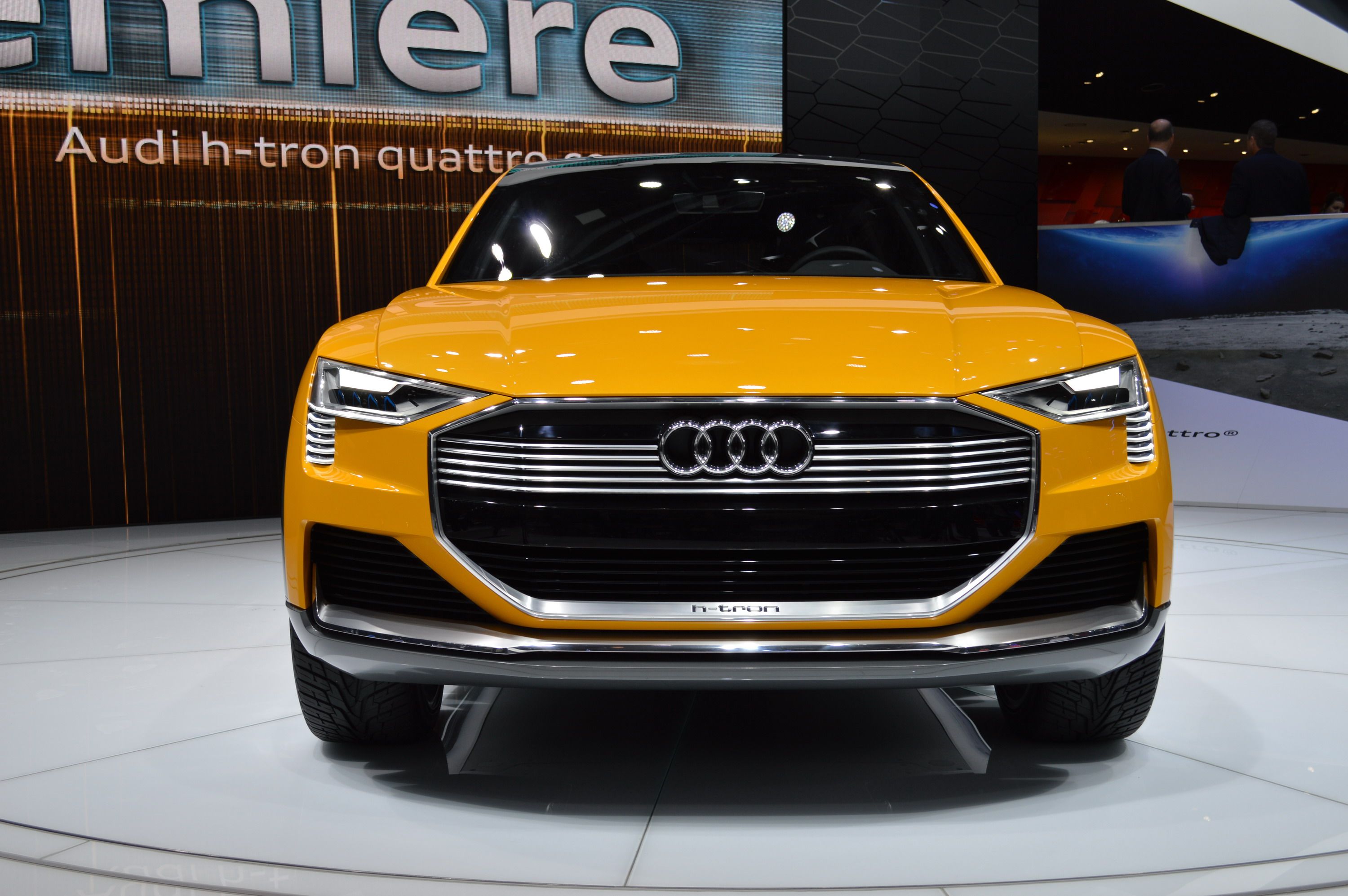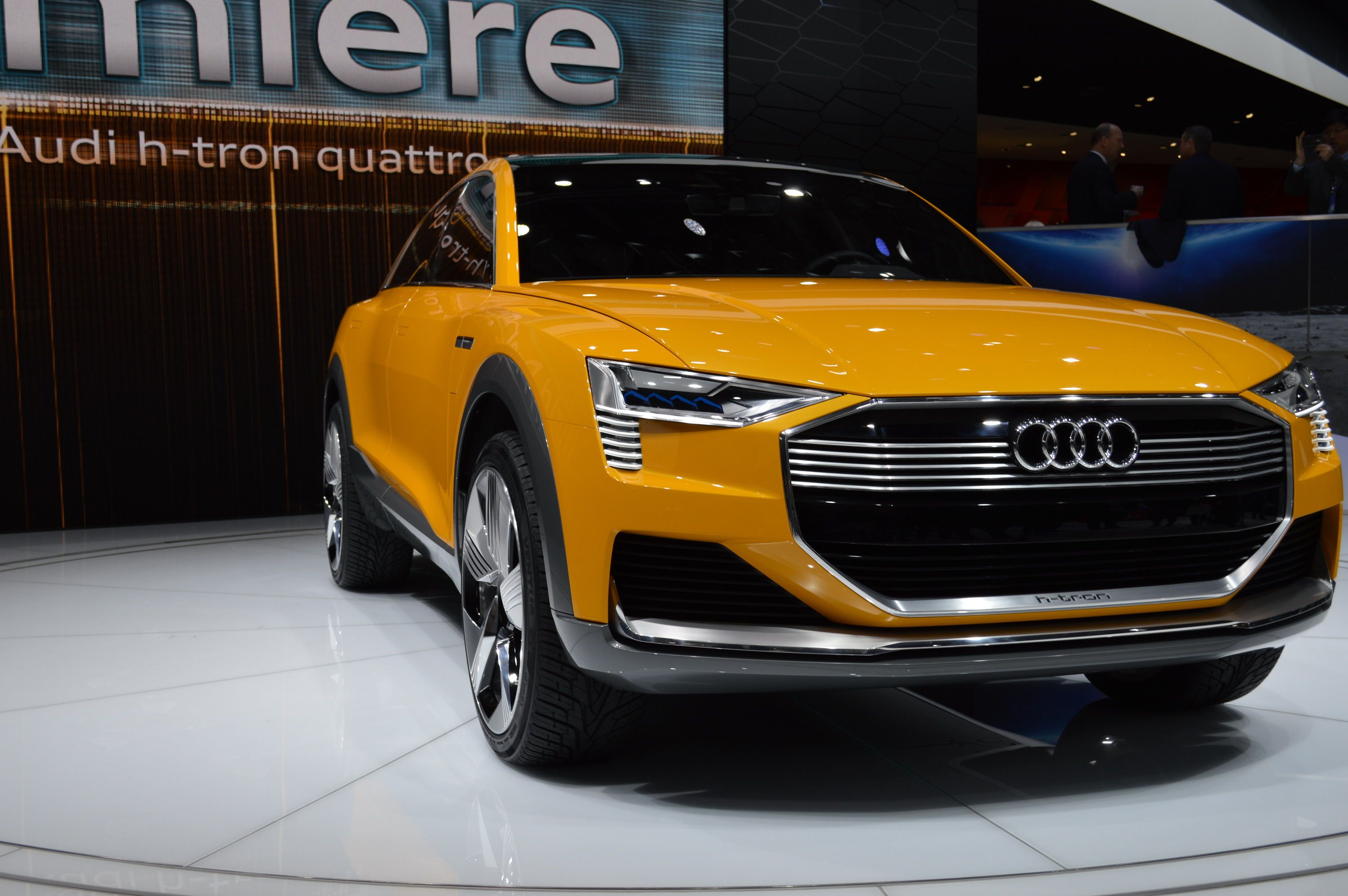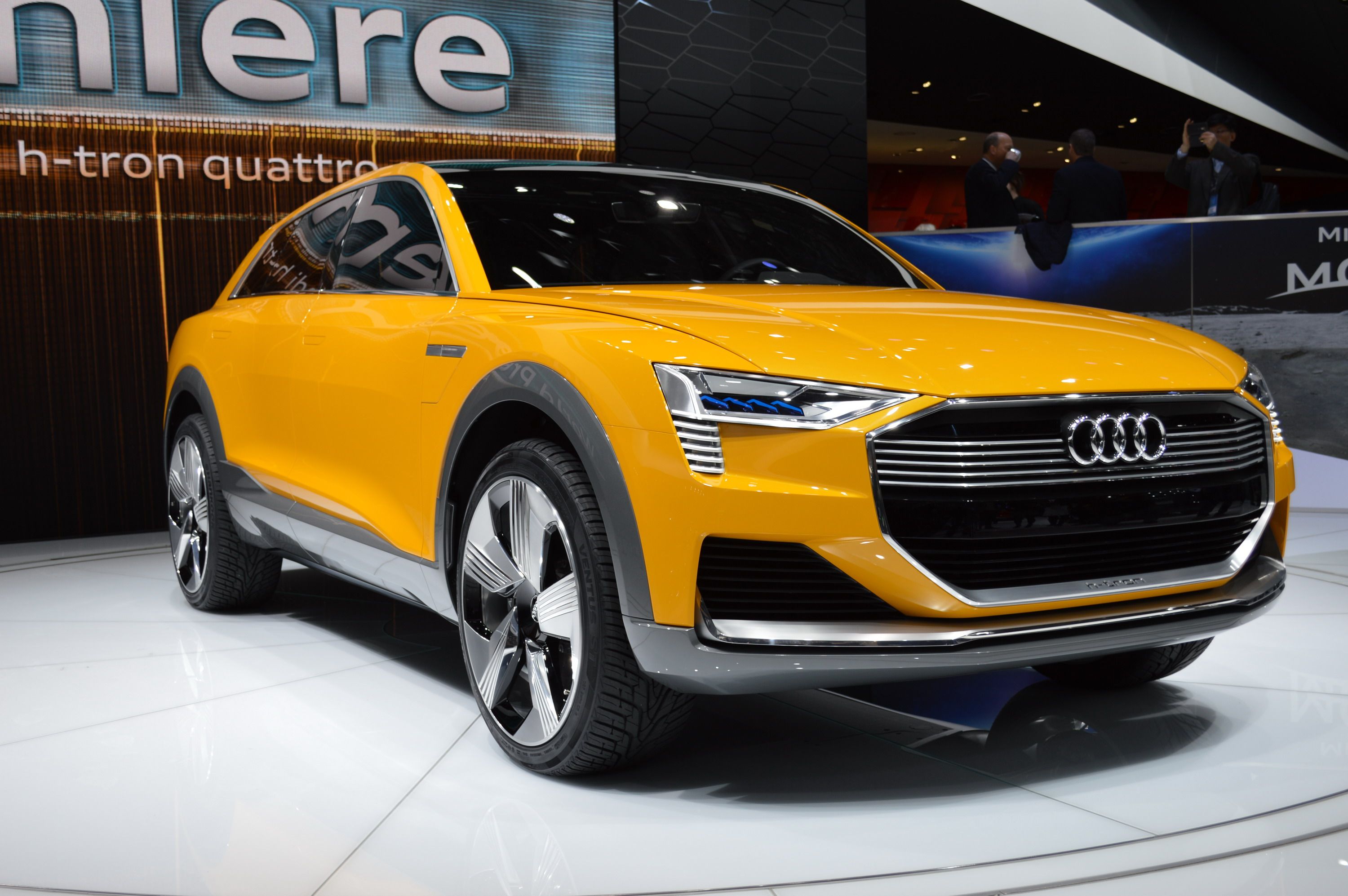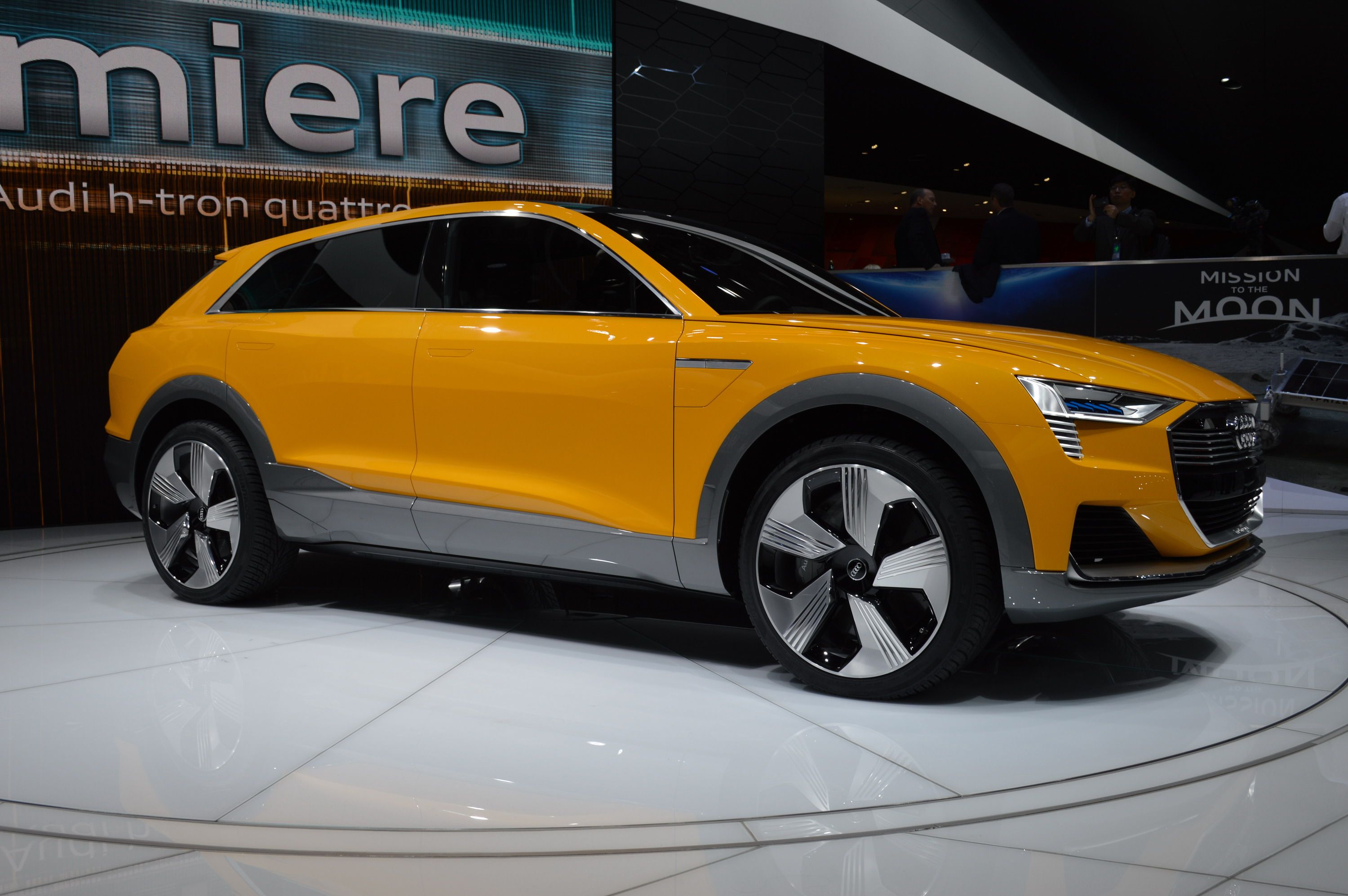In a world where manufacturers seem to be pushing the electric car,->ke1030 the idea of hydrogen cars has taken off, but not in anywhere near the same effect. Aside from the cost of hydrogen, the availability is the next biggest drawback. That, however, didn’t stop Audi->ke14 from debuting the hydrogen-powered->ke4485 Audi h-tron Quattro Concept this year at the Detroit Auto Show.->ke222
This SUV->ke145 concept->ke169 is built around a hydrogen fuel cell that can put out up to 110 kW of power and a battery pack that can supply an additional 100 kW on demand. That isn’t all that's great about the h-tron concept, though. One look at the interior, and it is enough to think “space ship.” The futuristic design is out of this world and appears to give a clear view into what cars will look like, on the inside, in the next five to 10 years.
This is only a brief description of the h-tron concept, so now it’s time to dive deeper into it and see just what the concept is all about. After all, if very well could be the next big production model from the brand of four rings.
Continue reading to learn more about the Audi h-tron Quattro Concept.
2016 Audi h-tron Quattro Concept
- Make: Array
- Model: 2016 Audi h-tron Quattro Concept
- [do not use] Vehicle Model: Array
Exterior
The biggest design characteristic of the h-tron concept is its aerodynamics. Up front, it's easy to notice that the headlight assemblies sit almost flush with the front fascia and are made up of OLED elements and the headlight itself utilizes Matrix laser technology. There is the big, unmistakable grille with the four rings in the middle, but it's is a departure from Audi’s current design language. The h-tron actually has an octagonal grille, which I suspect will likely be the norm for Audi models in the future. It’s big, but not gaudy like the current Audi Grille.
If it seems like something is missing when you look at the side of the h-tron, that’s because something is. There are no side view mirrors. That is because they have been replaced by small cameras, which allows for better overall aerodynamics. One body line runs from the upper tip of the headlight all the rear to over the h-tron’s rear haunches, while another body line runs along the middle of the doors, below the touch-panel door handles. Down below, a distinctive body line runs from the bottom of the front wheel well to the top of the side skirt at the rear wheel arch. Overall the side design gives the h-tron a truly muscular form, and those rear quarters are dominating enough to remind me of the rear quarters on the late 60’s Olds Cutlass or Chevy Monte Carlo.
The rear of the h-tron is straight to business. The taillights sit almost flat with the rear end – no real wraparound design language here. They are of the OLED design and extend from the back of the rear quarts onto the rear hatch, with each side terminating at the four rings emblem. The rear fascia is rather bland, with a chrome insert at the bottom, and since it is hydrogen powered, the h-tron has no exhaust pipe. The short rear overhang on the hatch gives the back glass a 3-D appearance, which is about as sporty as it gets back here.
Last but not least is the roof. It is – as of the time of this writing – the world’s largest solar roof. It can put out a total of 320 watts, increasing the annual range of the h-tron by 621.4 miles. If you compare the h-tron to current models, it could very well be a preview of what the next Q5 or Q7 may look like.
Interior
I’m not sure what it is about the blue coloration on the inside of the h-tron, but for some reason, that color just screams hydrogen to me. Maybe it has something to do with water being blue, but I digress. Right away you can see the blue coloration accenting the door panels, center console and design of all interior technology. All switches on the dash and center console are controlled by touch, as are the buttons on the steering wheel spokes. A large display in the dash provides information like range and probably GPS location. The instrument cluster is a curved LED surface and provides all operational information like time, date, temperature, mileage, range, speed, and whether the car is in park, reverse, or drive.
Below the main infotainment screen is an OLED touch panel used to control all other aspects of the concept. Things like seat position, temperature control, and the like can all be controlled by the touch panel. In the images, the screen is displaying current location with weather information and the interior temperature for the driver and passenger. Audi even went so far as to add a wrist cushion in front of the touch panel for comfort.
To the rear, the center console continues to the rear seating area, offering rear passengers an armrest. Rear passengers have a small OLED control panel to adjust the temperature and large touch screen displays on the back of each seat. Of course, the concept includes online connectivity via a 4G LTE connection, and as you can see from the images, there is plenty of room for each of the rear passengers to kick back and get comfy on long road trips.
The luggage compartment to the rear can hold up to 17.7 cubic feet of cargo, but from the looks of things don’t expect the seats to lay flat for any extra storage. This concept is meant for traveling in style and comfort, not hauling around half of your house on a road trip.
Drivetrain
As I mentioned before, the h-tron is powered by the combination of a hydrogen fuel cell, and a 100 kW battery pack. The solar roof helps to recharge the battery, while filling the hydrogen cell takes less than five minutes. Power from the hydrogen cell and the battery are sent to the electrified Quattro system – one motor for the front and one motor for the rear. Combined, those motors put out around 405.7 pound-feet of torque. The electric motors use up 2.2 pounds of hydrogen for every 62.1 miles driven, and a full take offers up a range of about 372.8 miles. Not too shabby for something with electric motors. If hydrogen was more readily available and affordable, this concept would be highly feasible in the real world. Something tells me we’re not far off, but we’re not quite there yet.
When you put the pedal to the floor, the two electric motors can propel the h-tron to 62 mph in less than seven seconds, and top speed is electronically governed to 124.3 mph. Adaptive air suspension provides a comfortable and smooth ride on those stylish 22-inch wheels. The h-tron also employs Audi’s piloted driving and parking technology, as well as its central driver assistance system.
Conclusion
I absolutely love the design of the h-tron all the way around. The exterior is sporty and sleek, yet muscular enough to have a dominating look. The inside is even better with all of the futuristic technology and touch controls. I don’t know what it is, but I love the idea of two-dimensional controls offered by touch screen interfaces like this. It is so “star trekish” that sitting in the cockpit probably feels like you’re about to take a run around the moon in a shuttle craft.
Add that feeling to the silence of those electric motors and you’ve got another spaceship on wheels. I’m not sure how much I like the idea of hydrogen-powered vehicles. I have this feeling that hydrogen either isn’t going to take off, or will be overshadowed by development of better battery technology that will ultimately make the idea of hydrogen fuel in cars obsolete.

